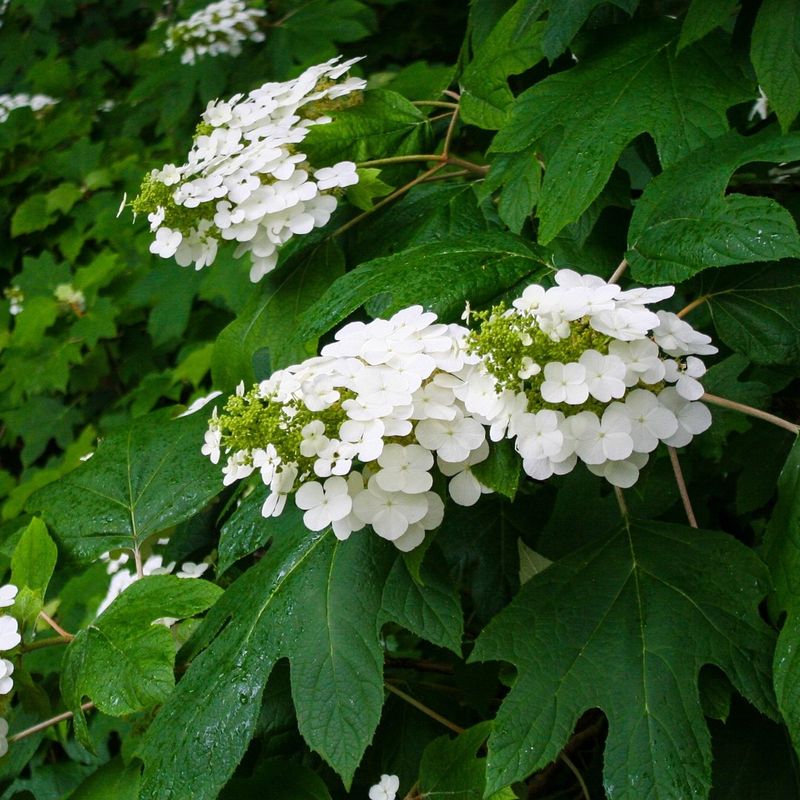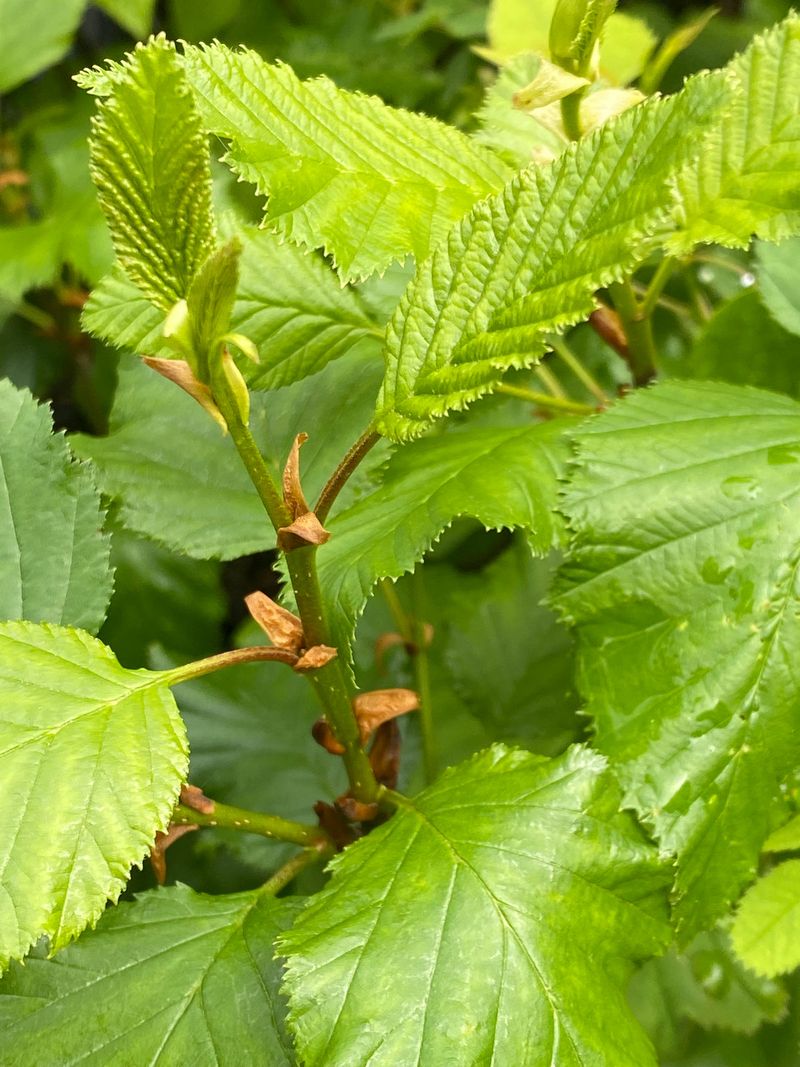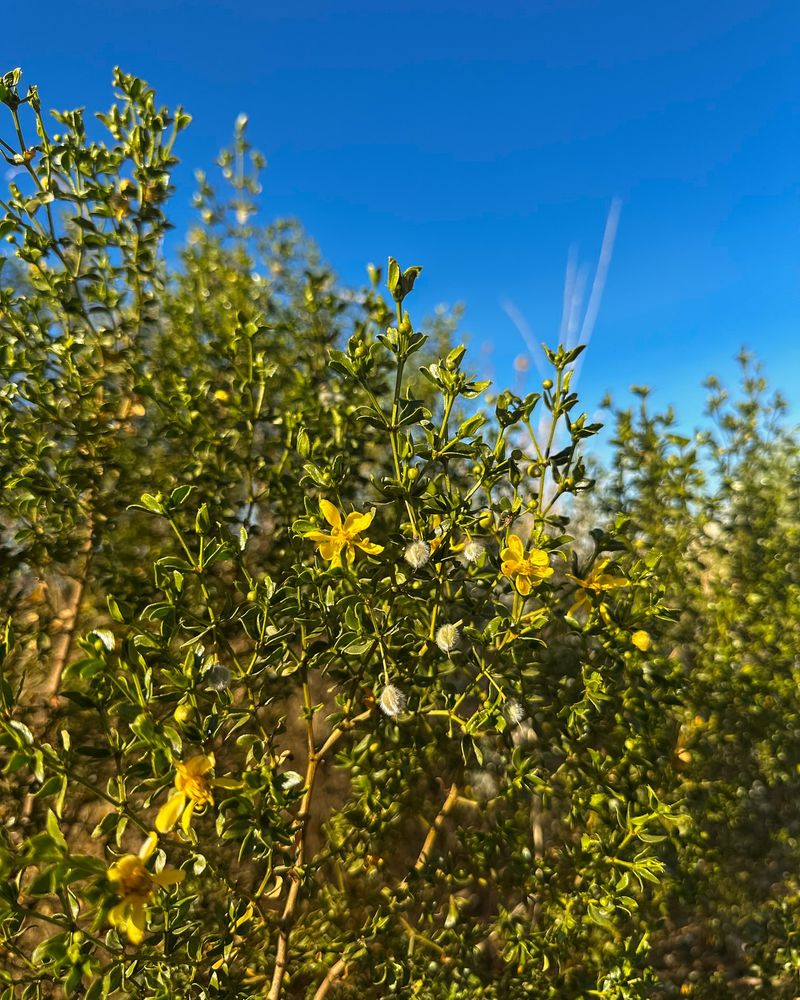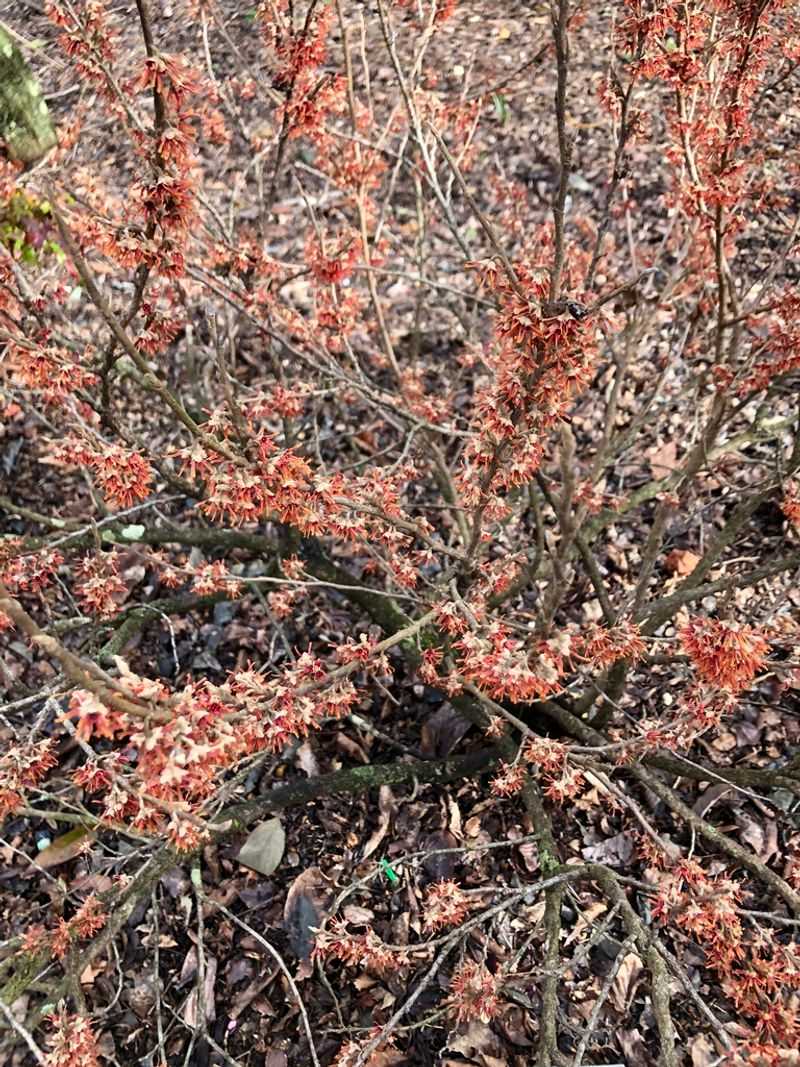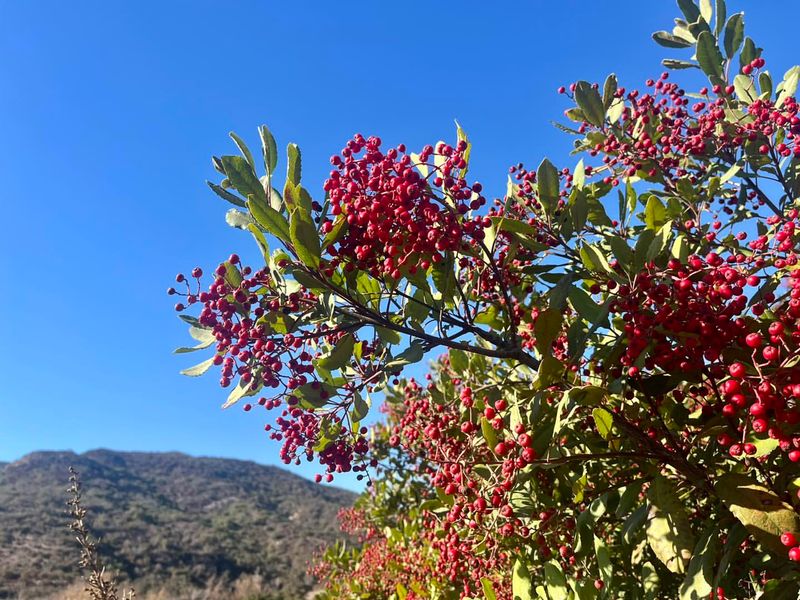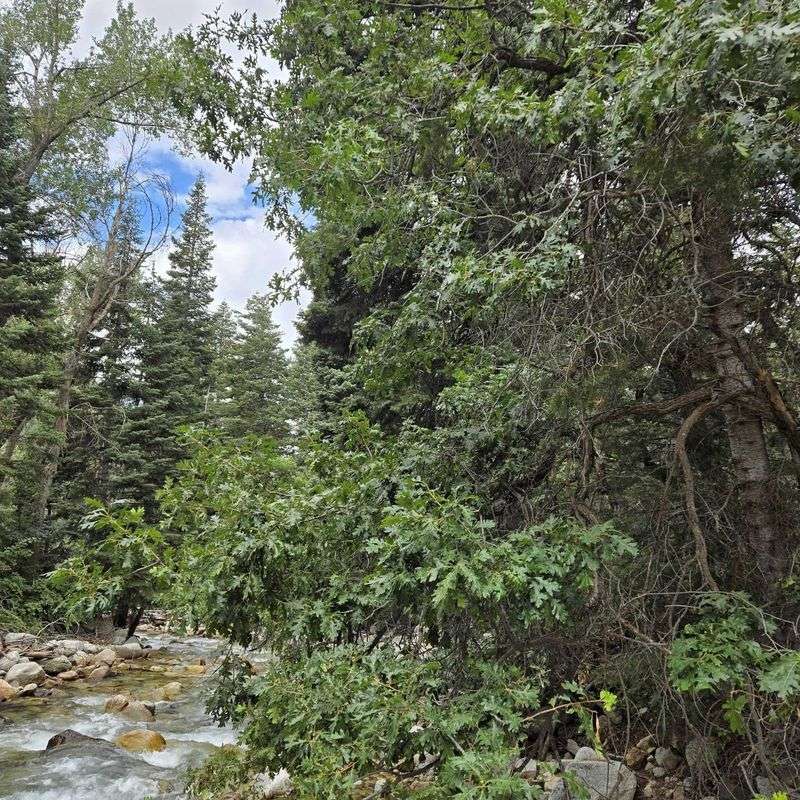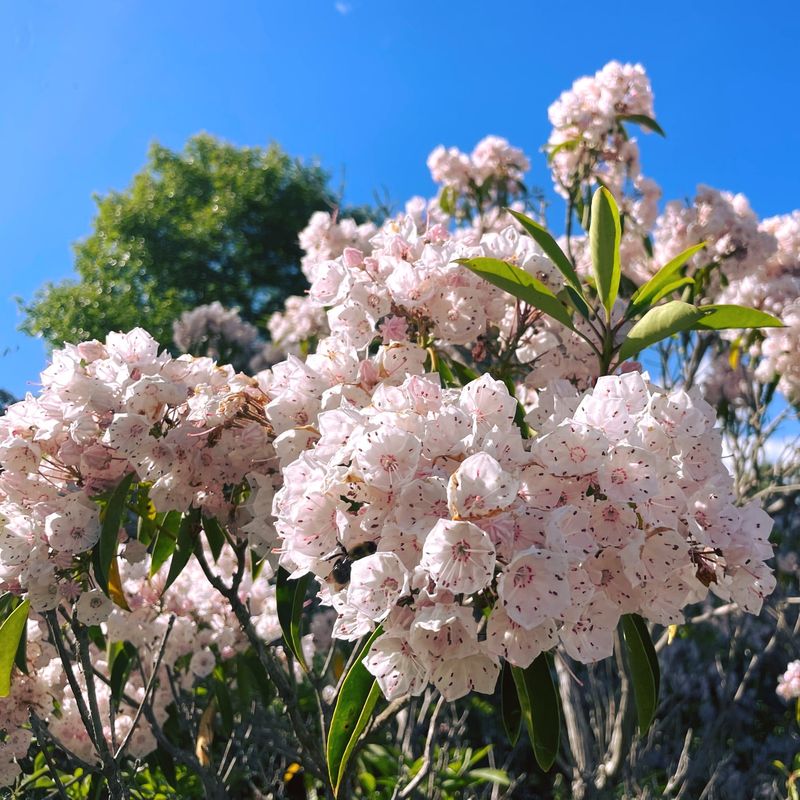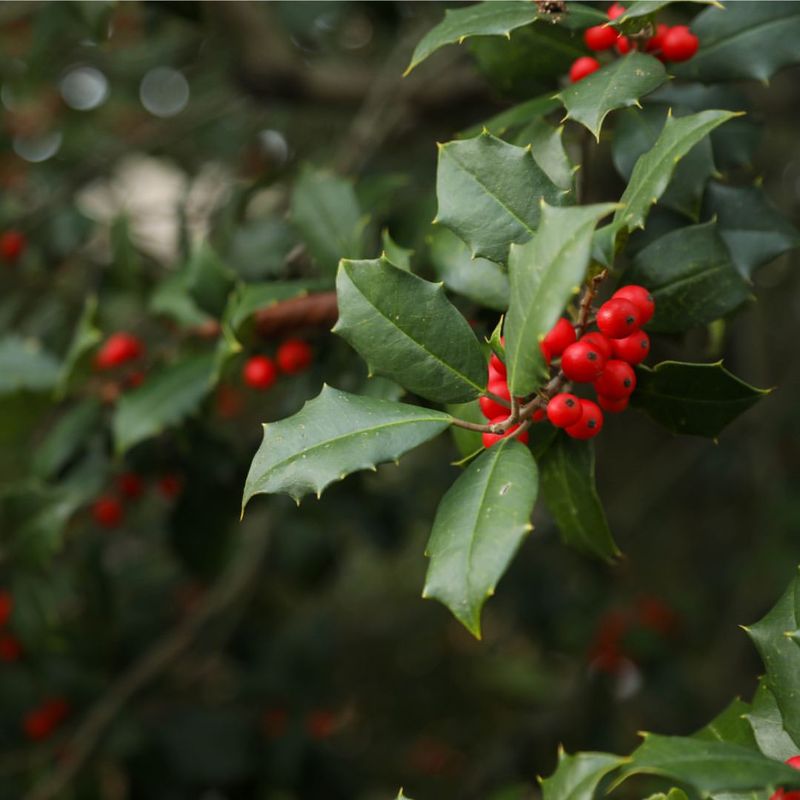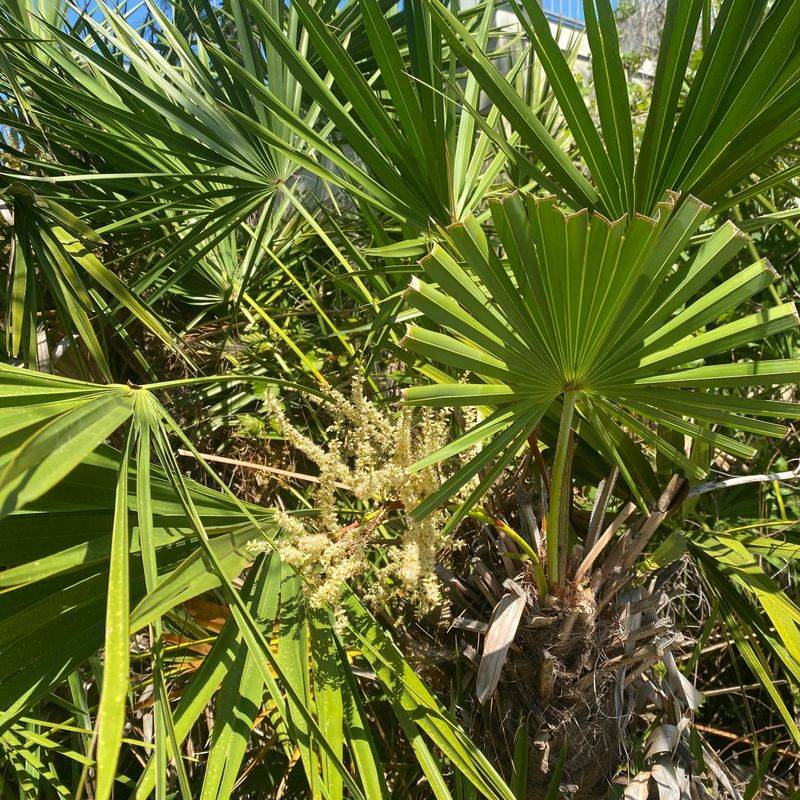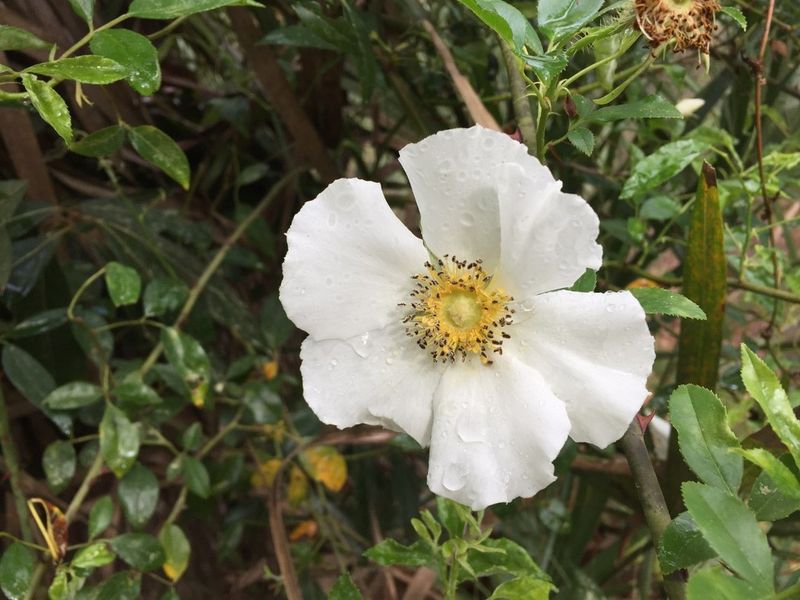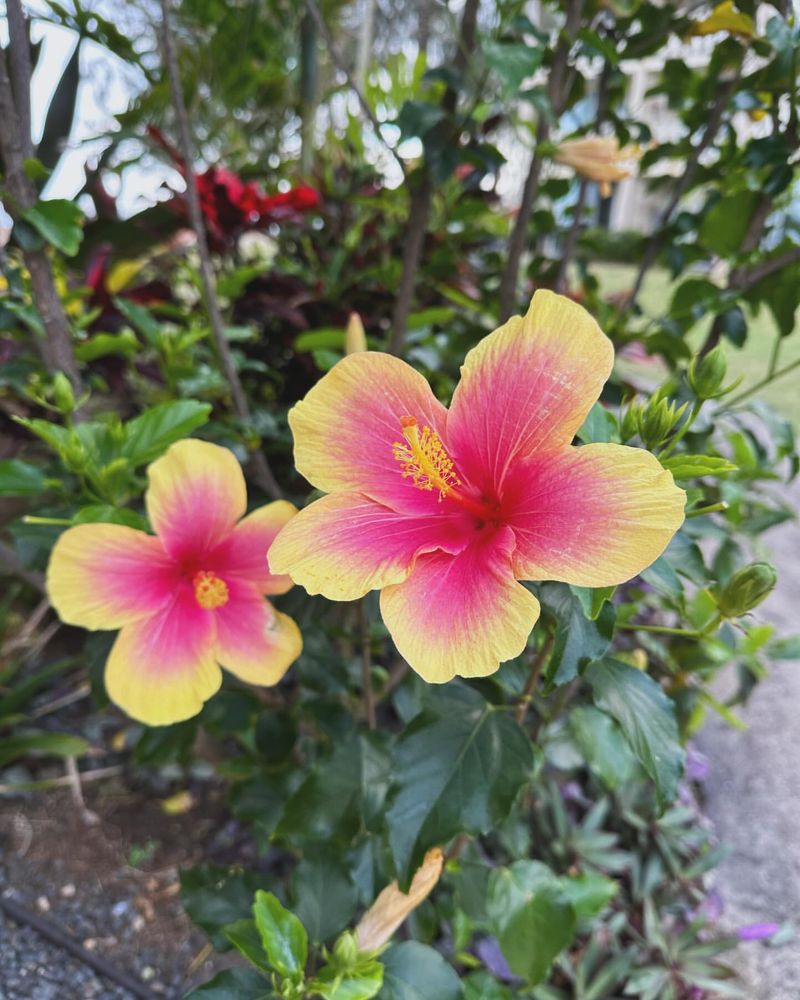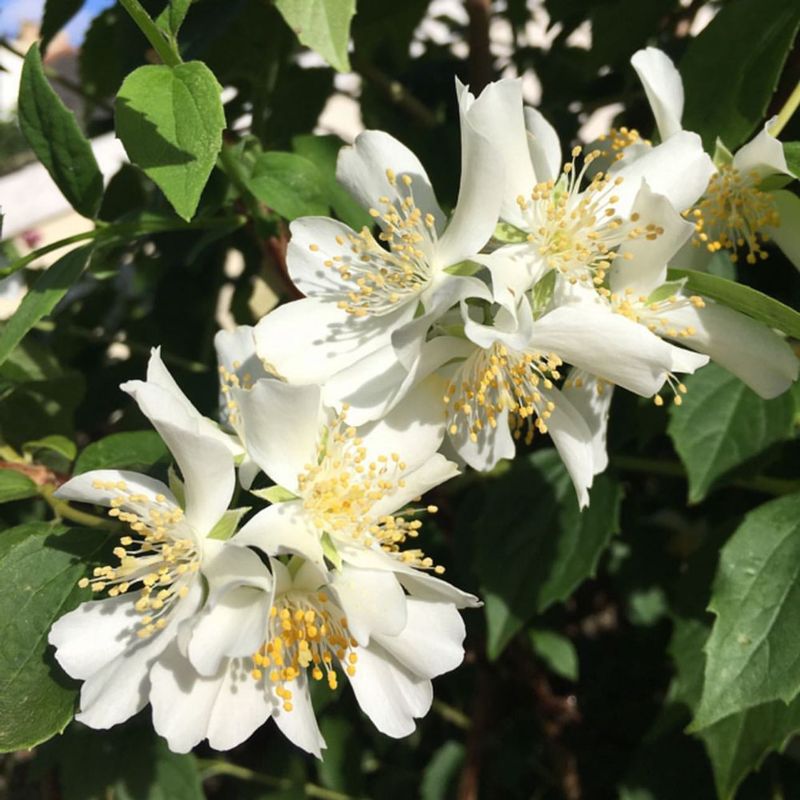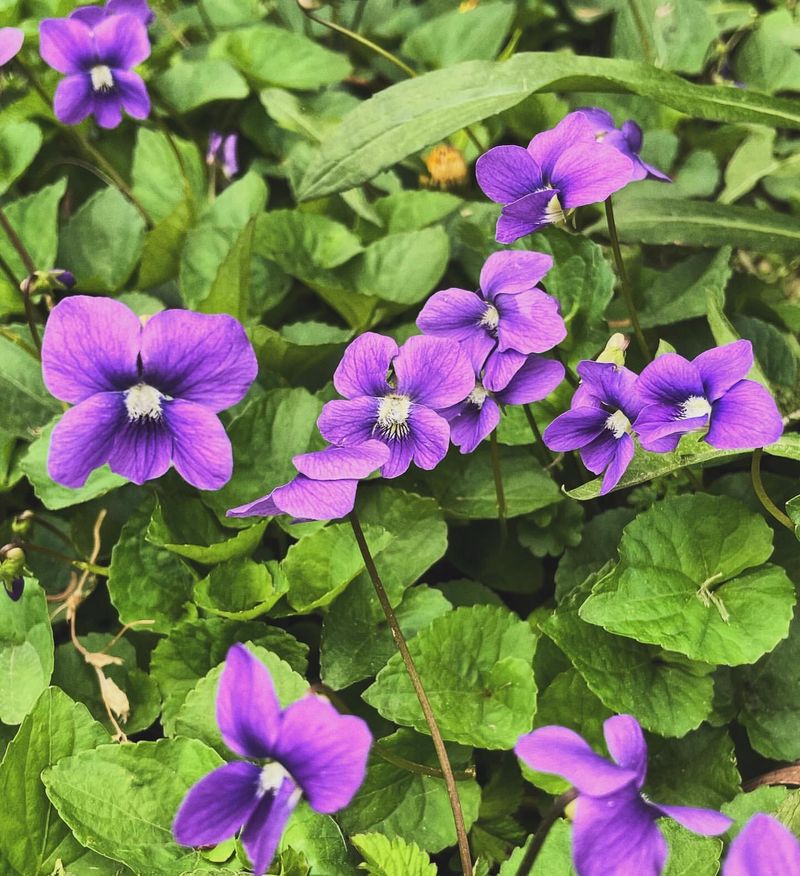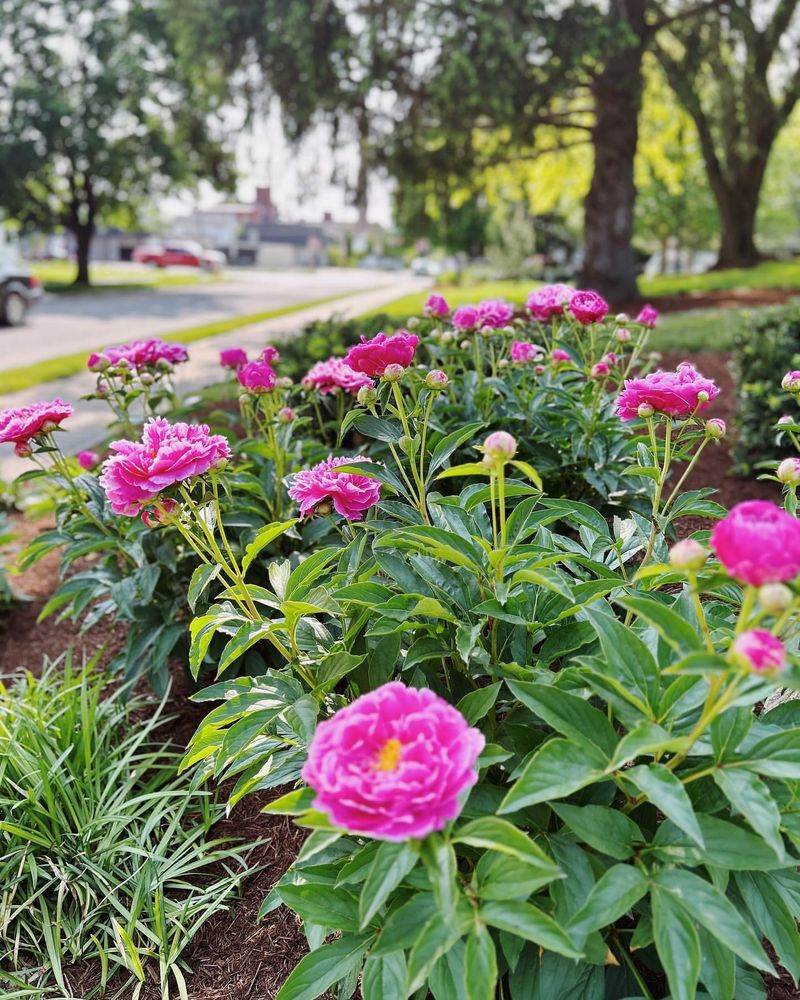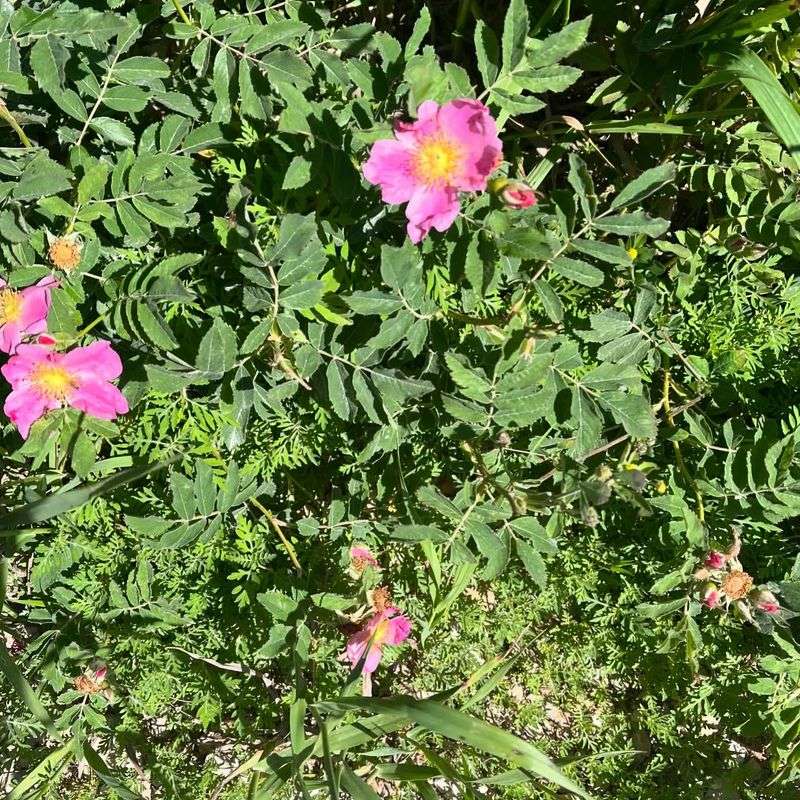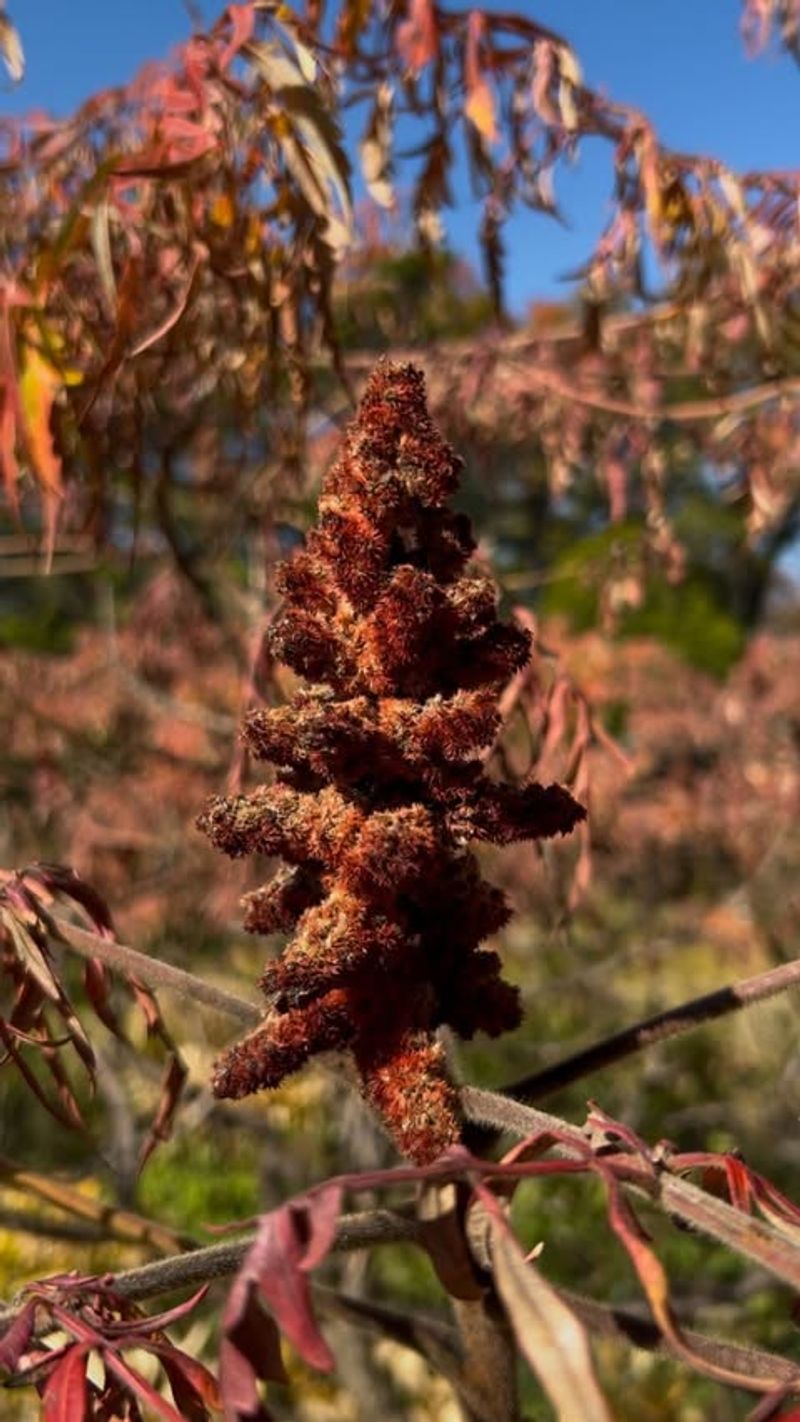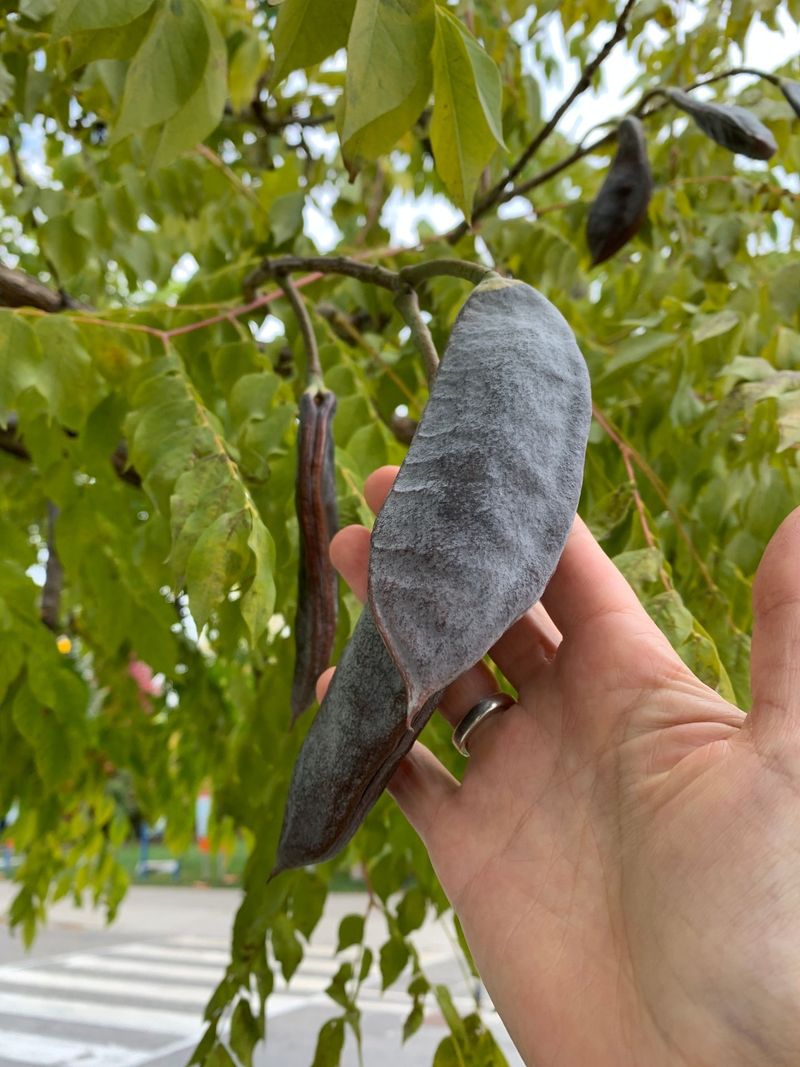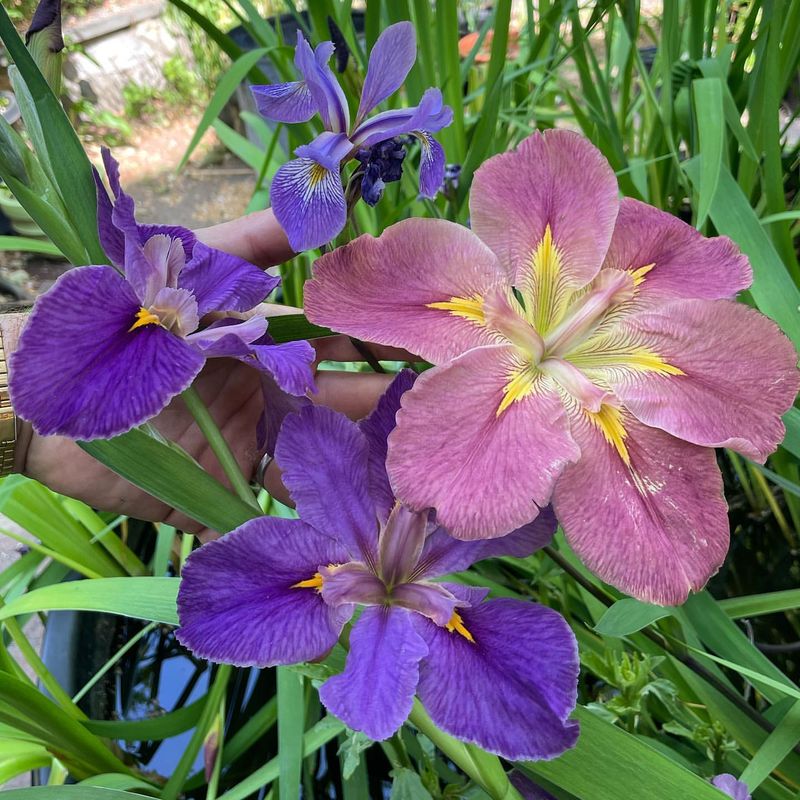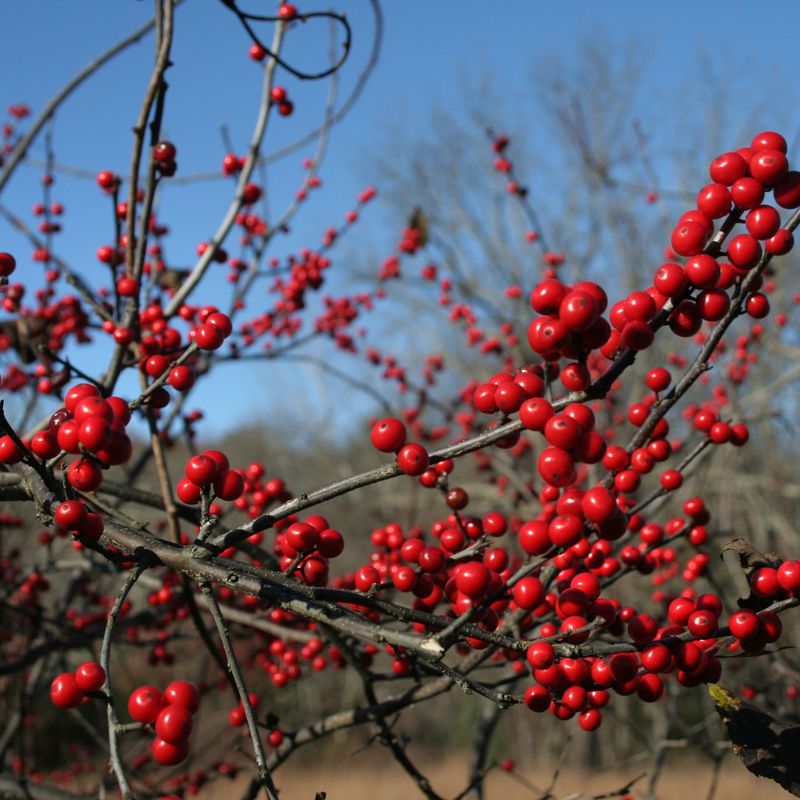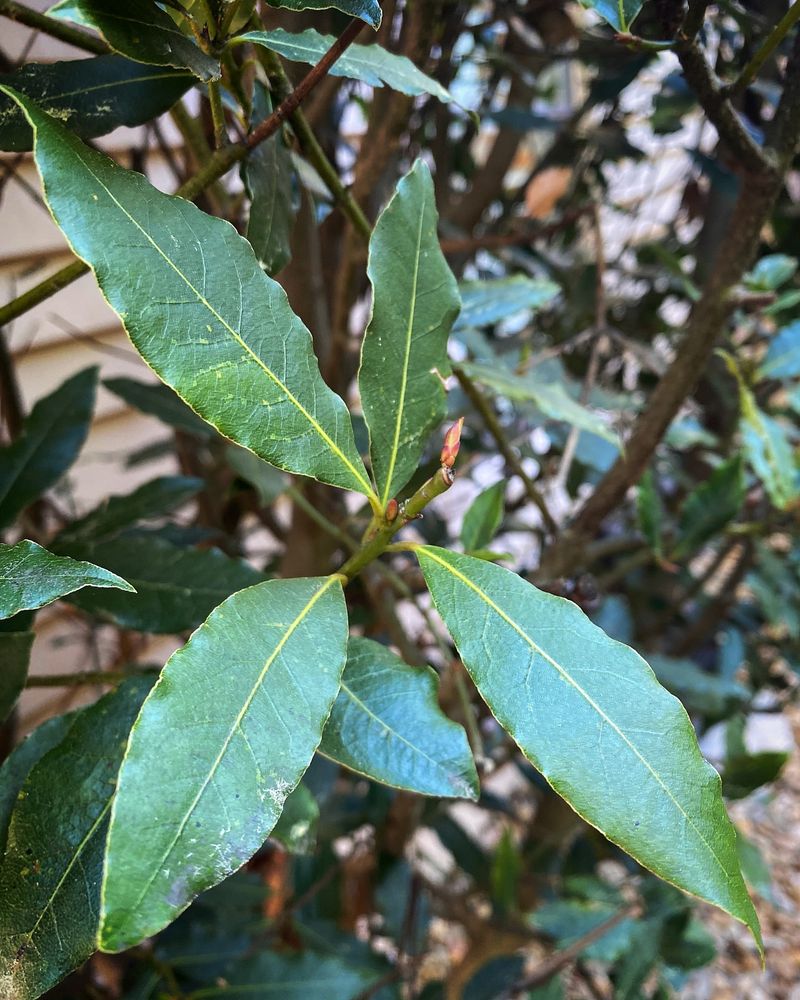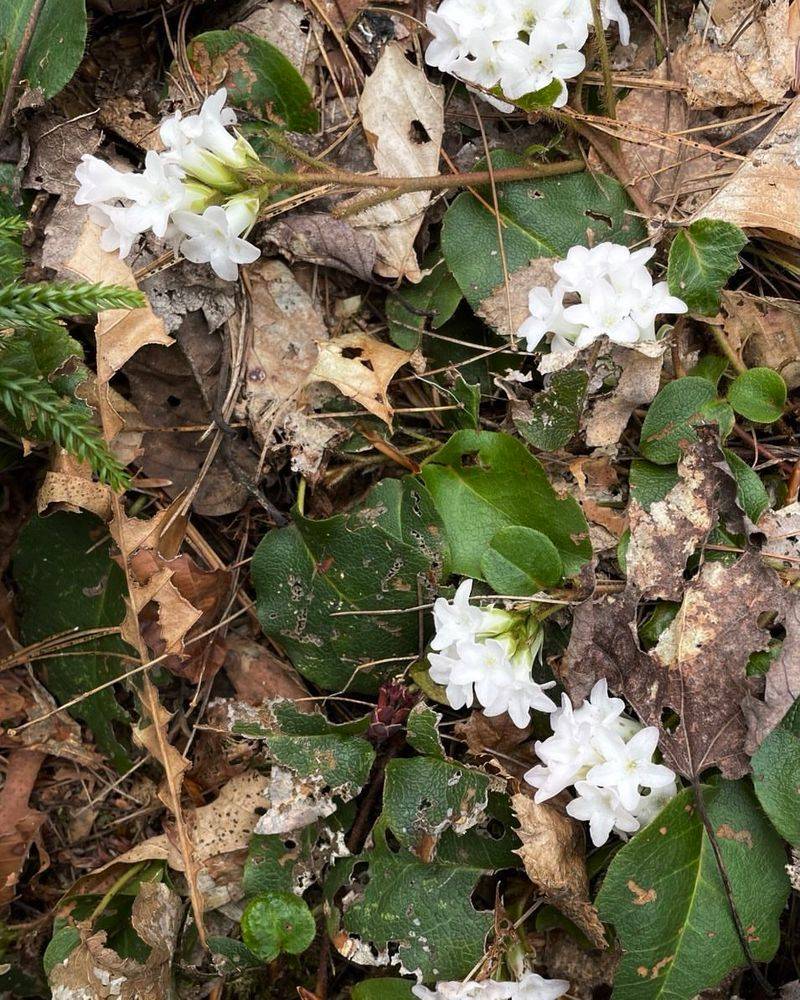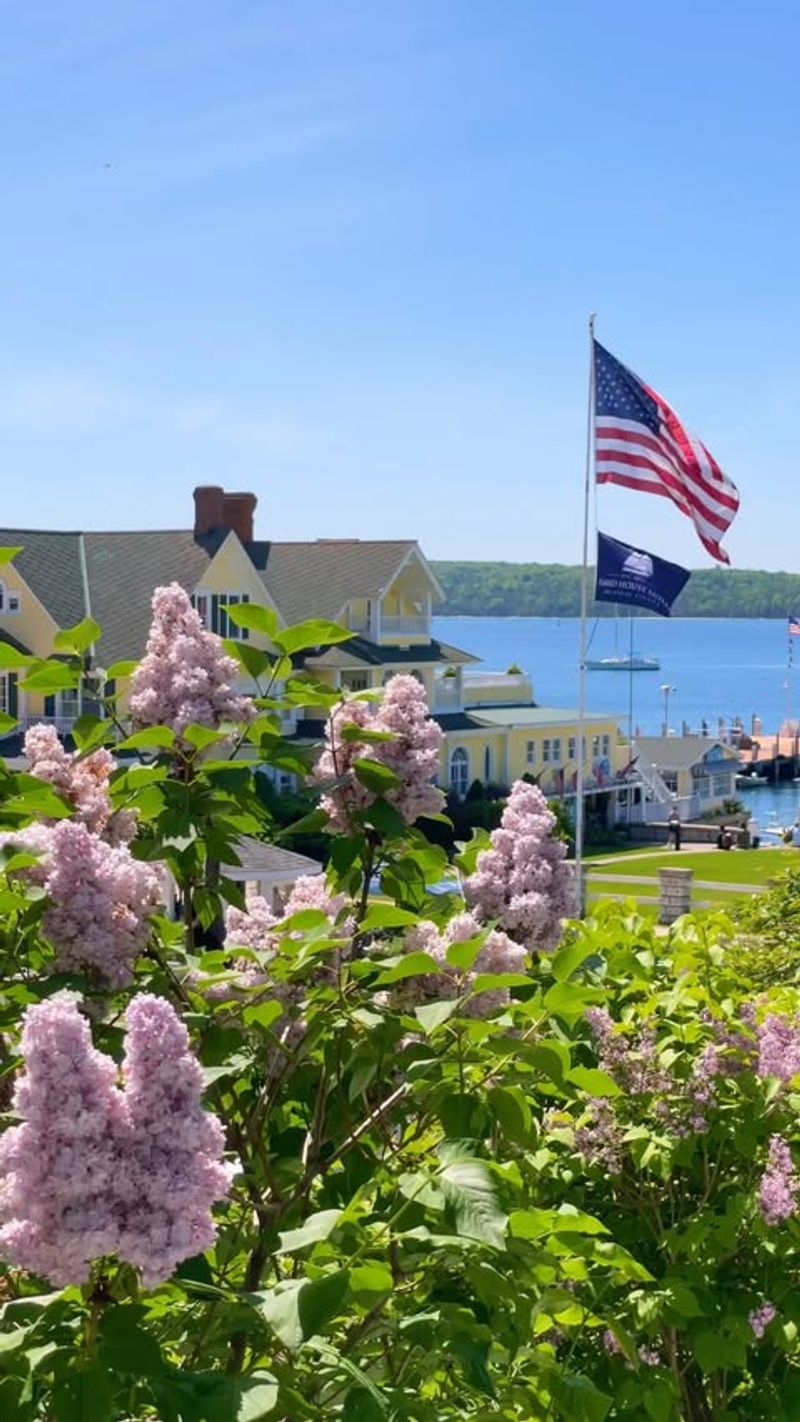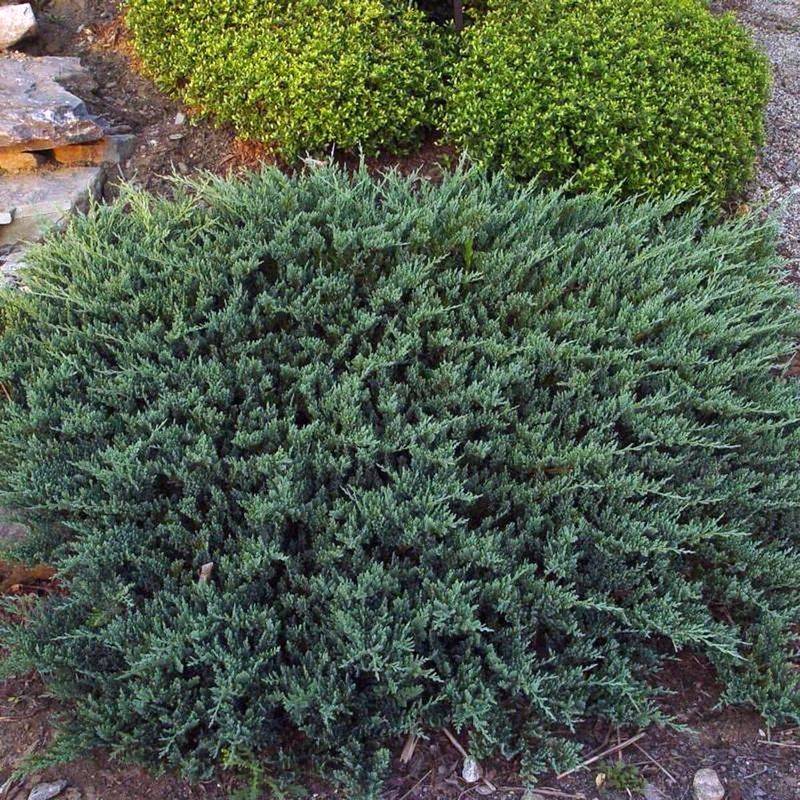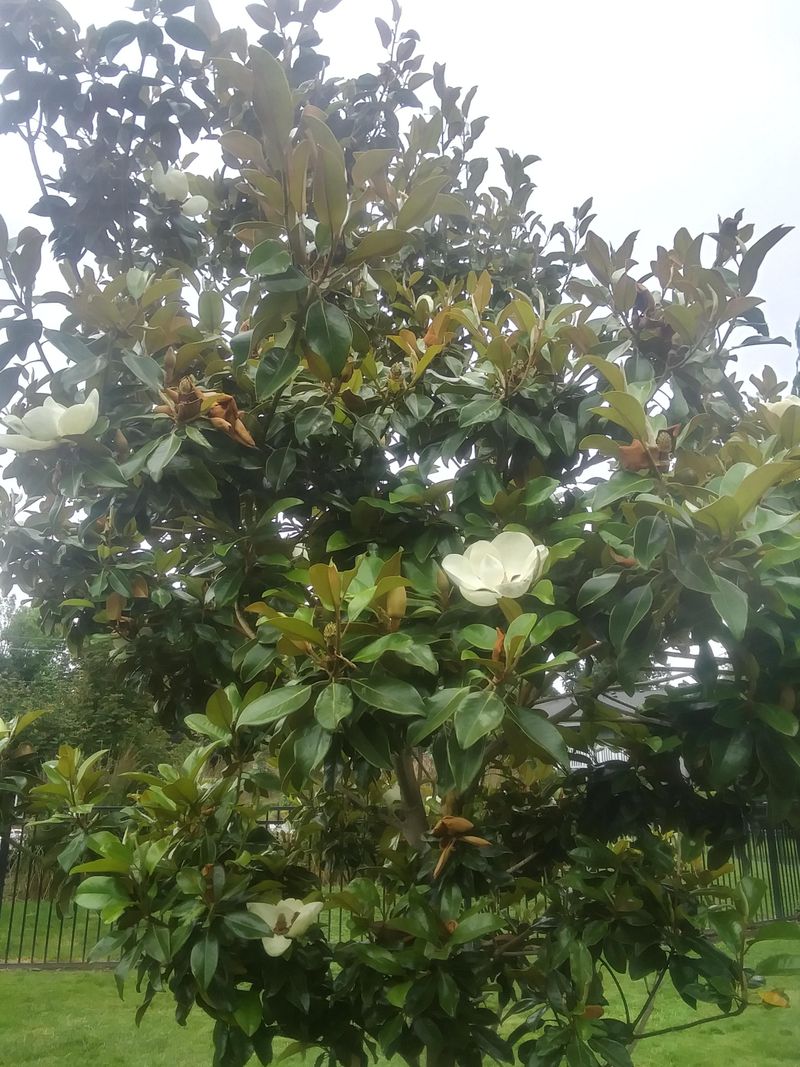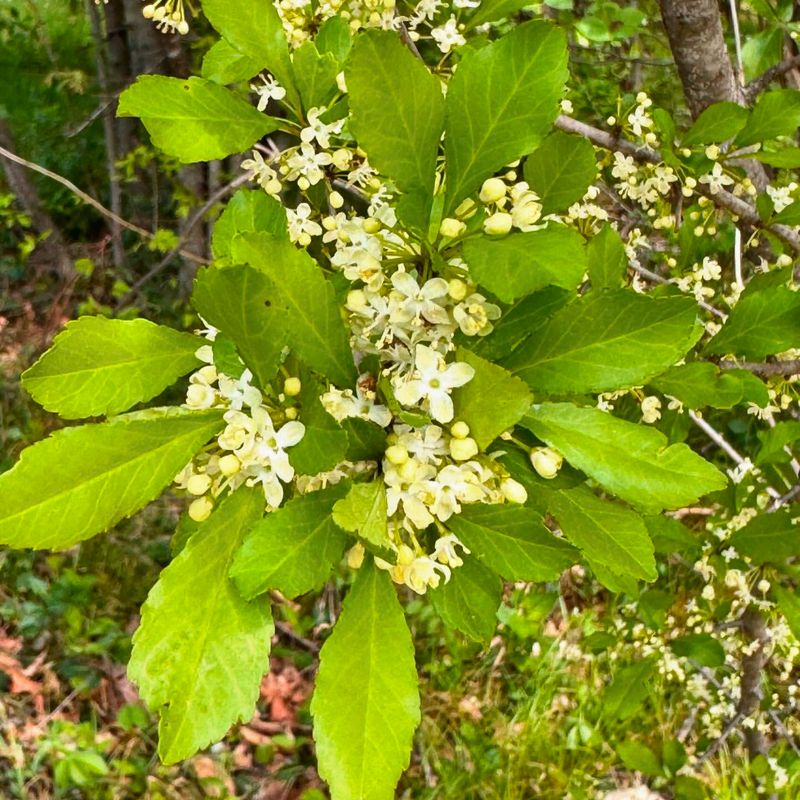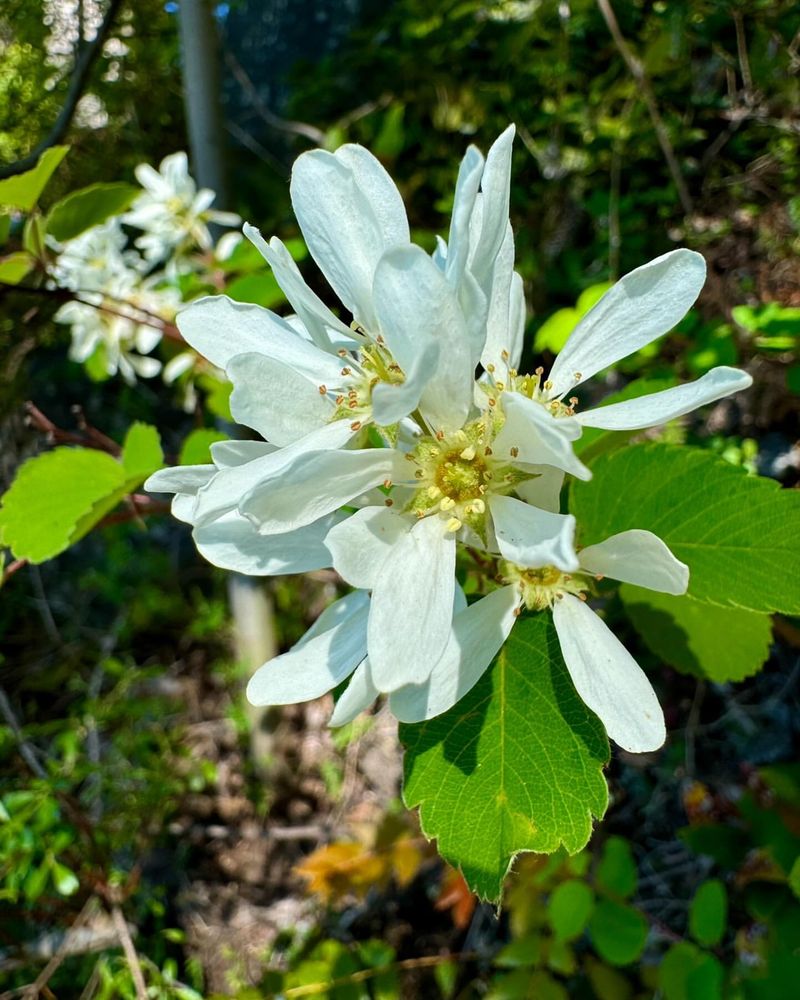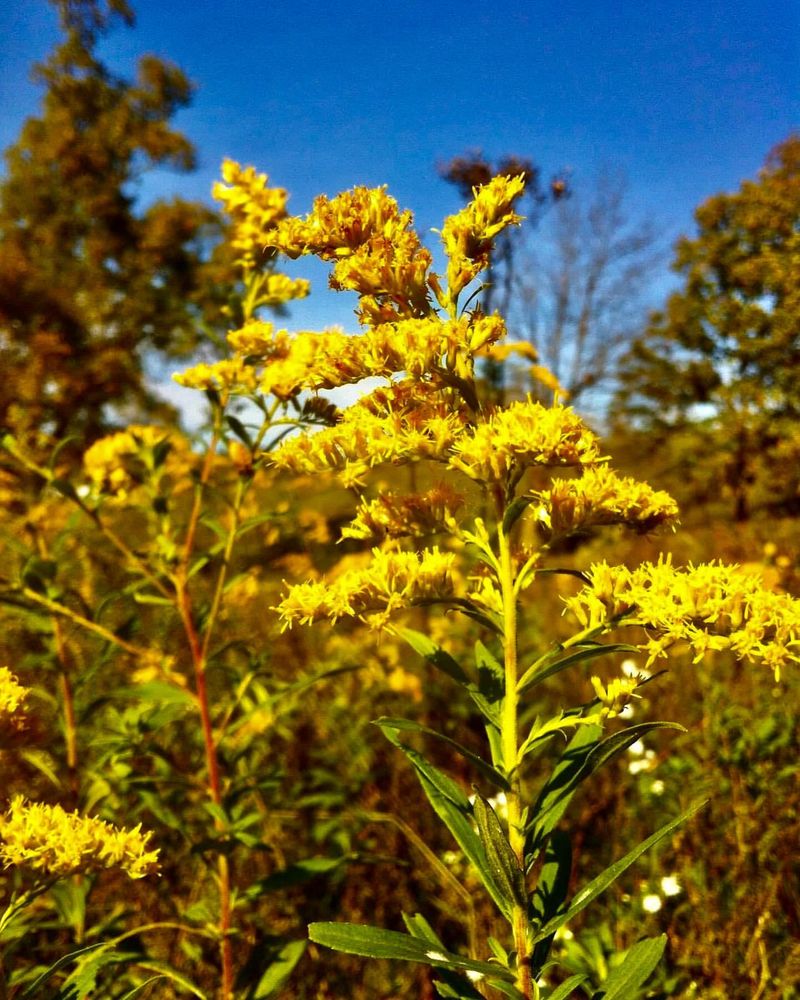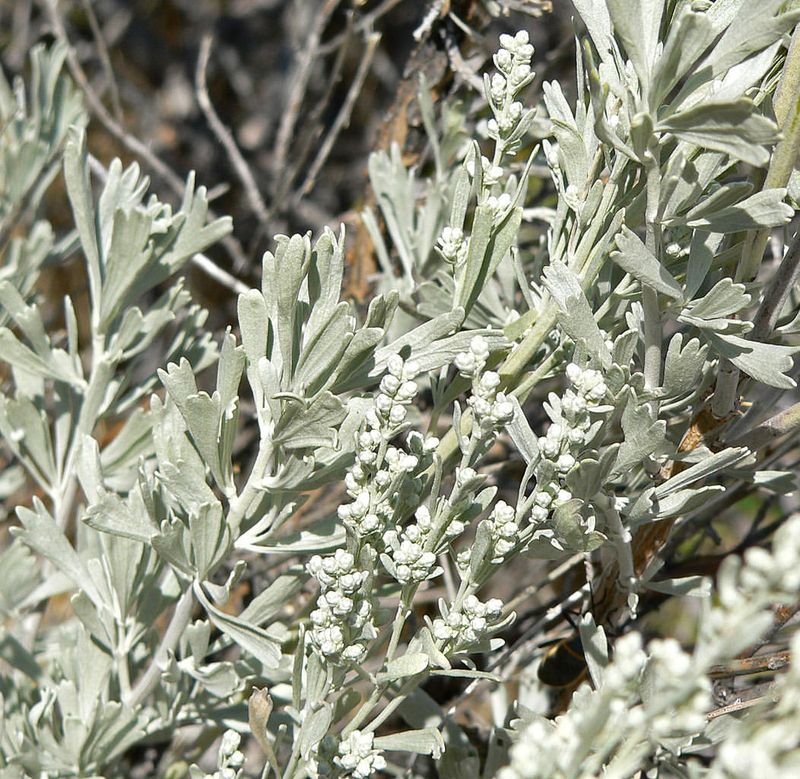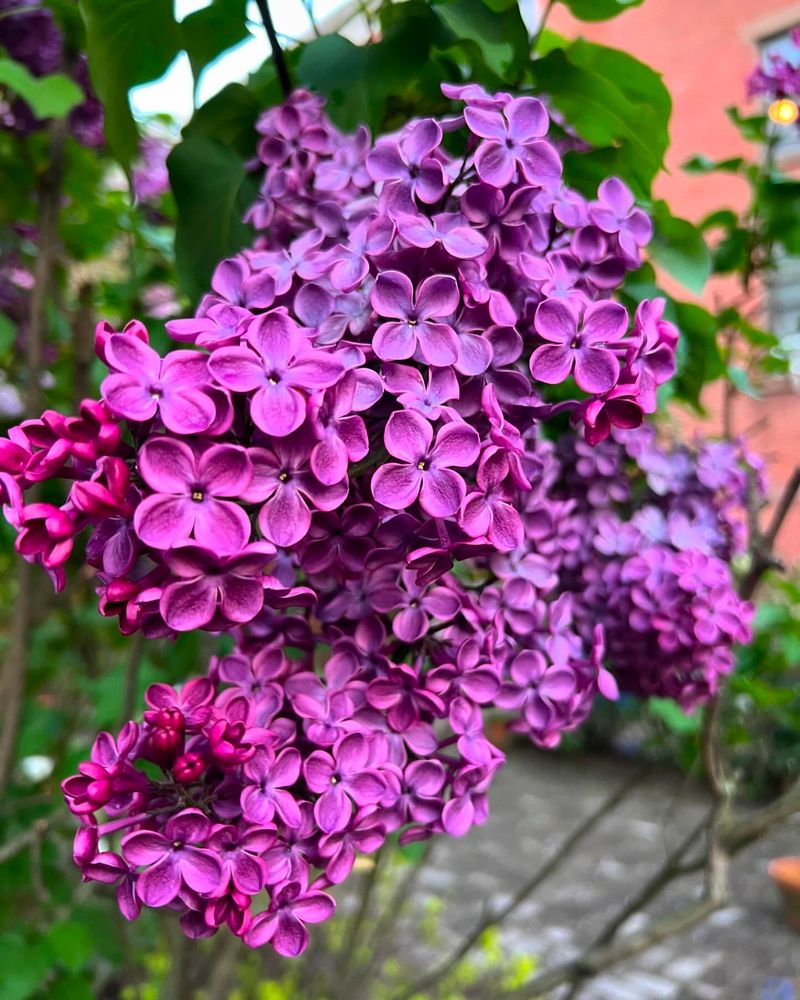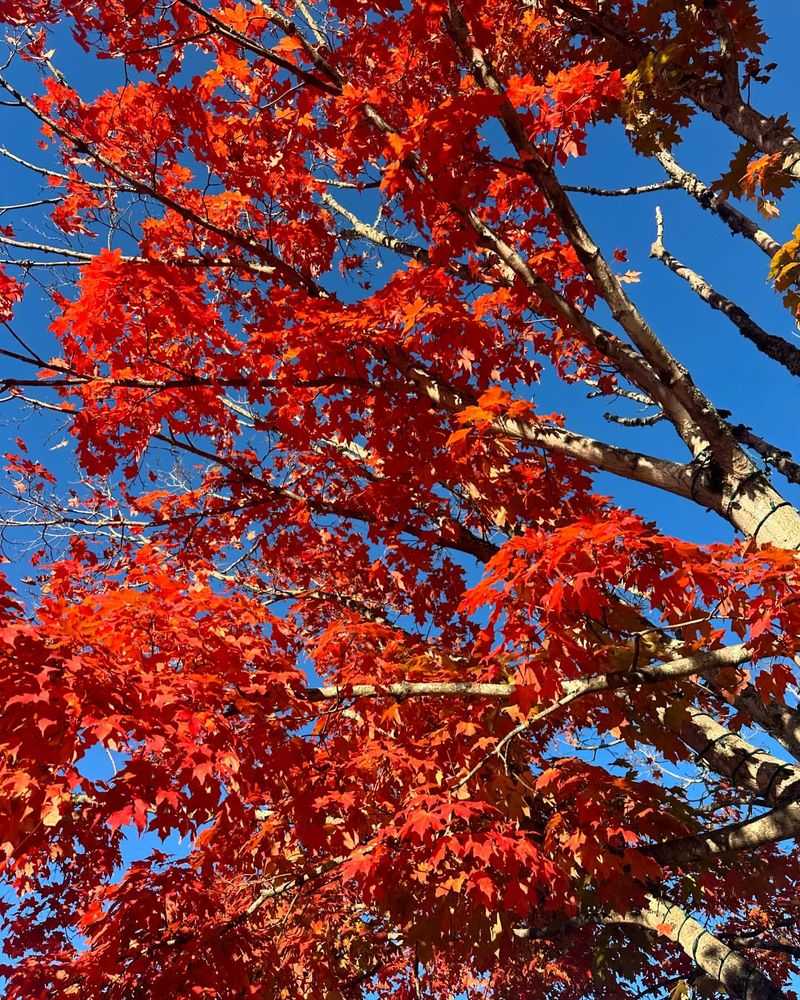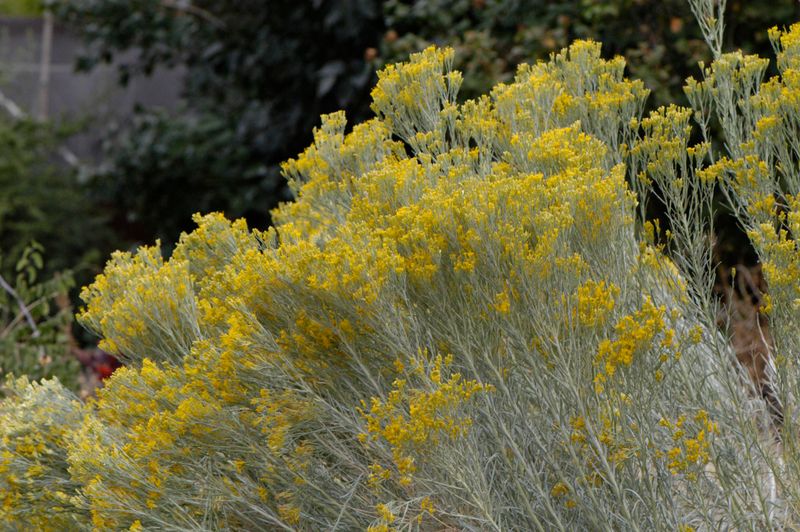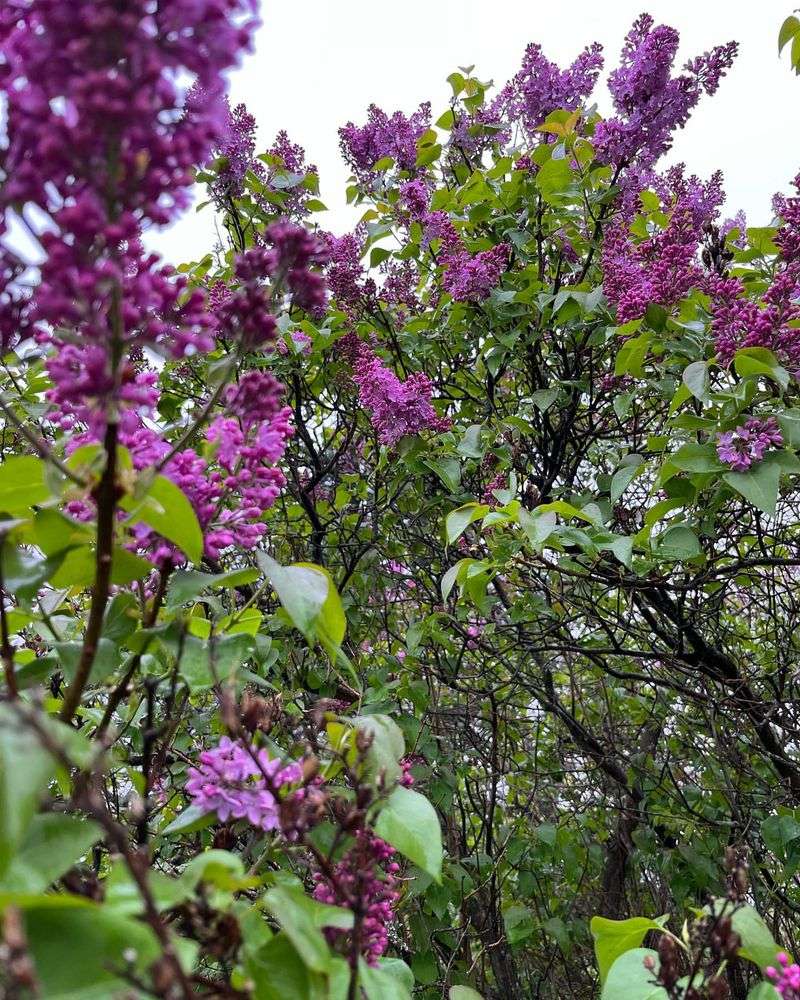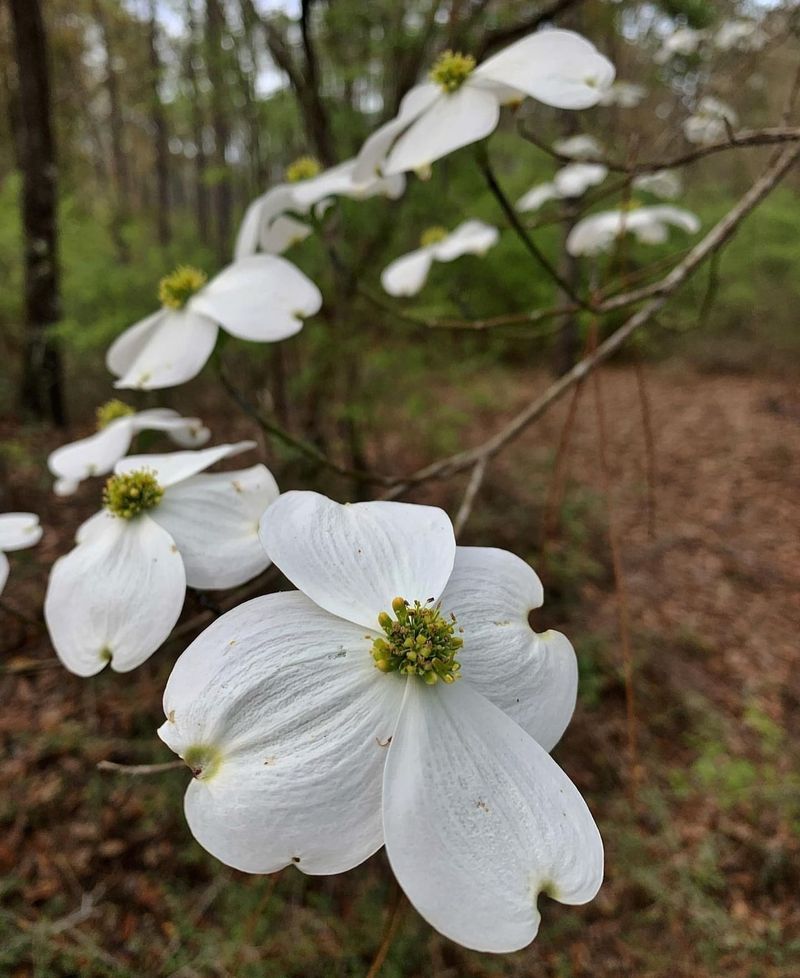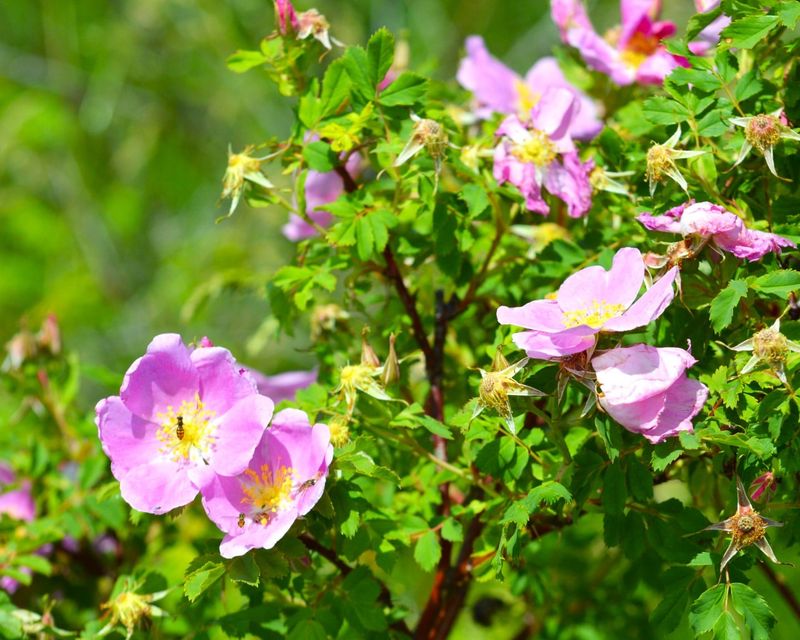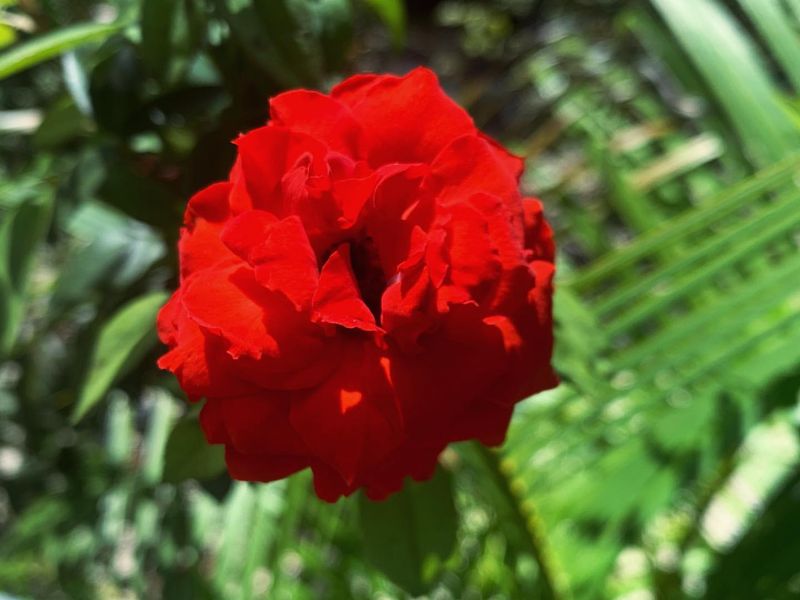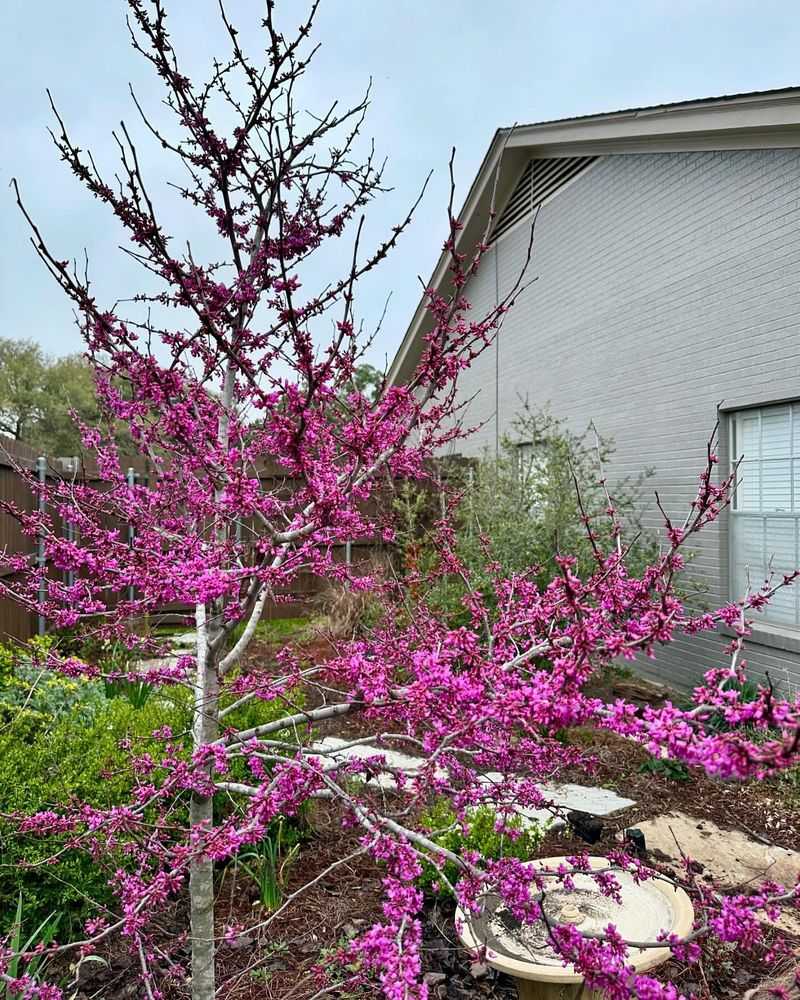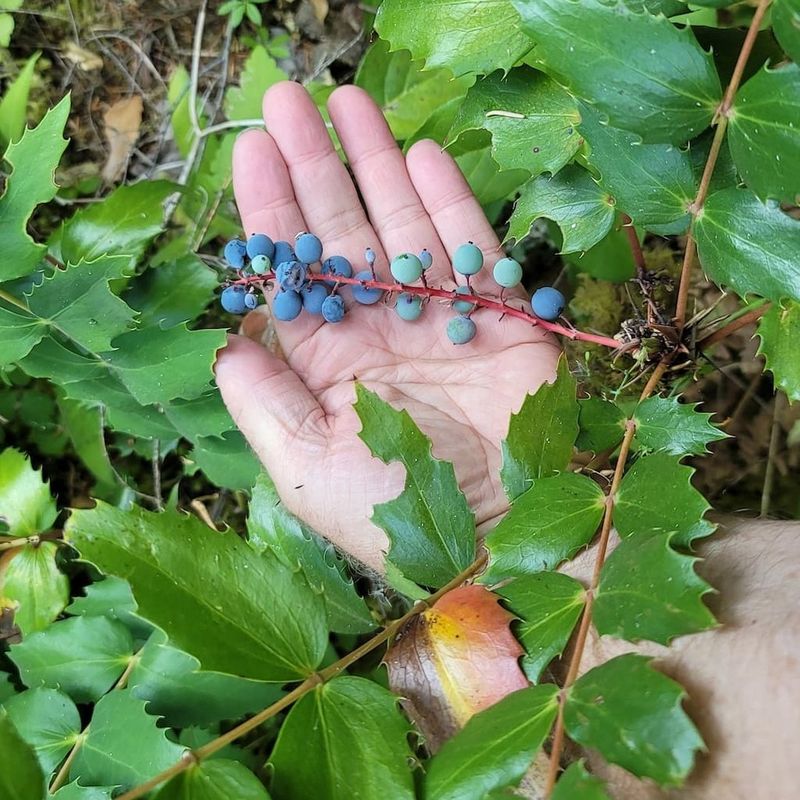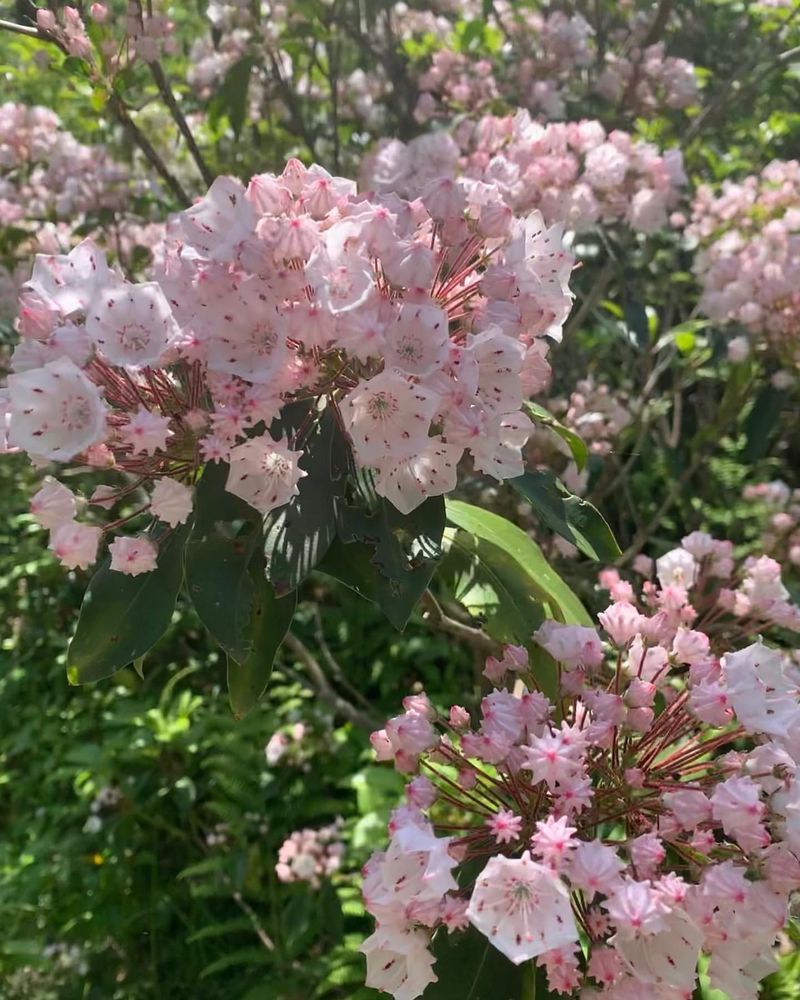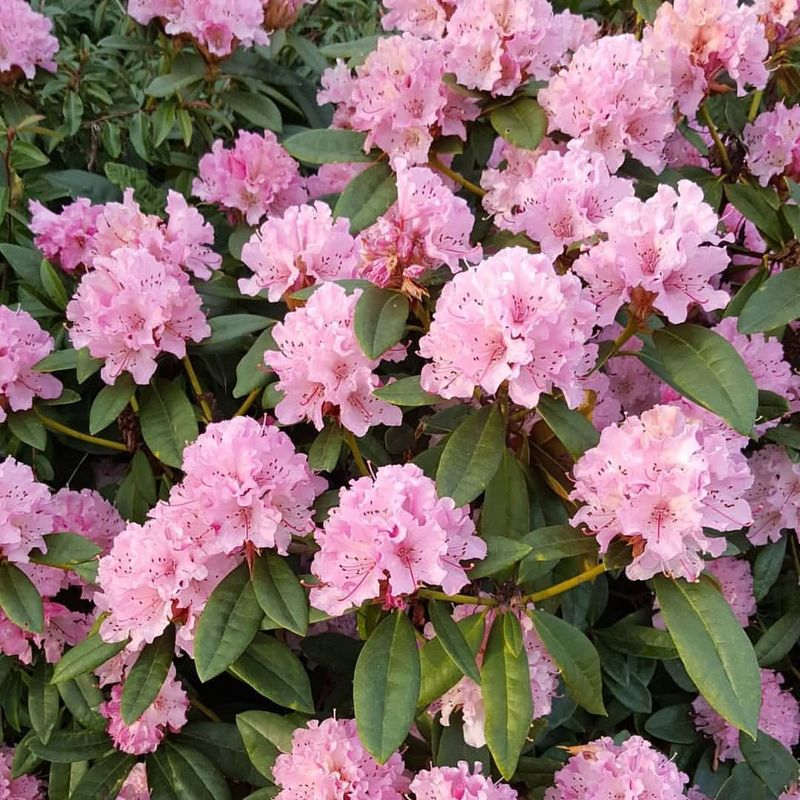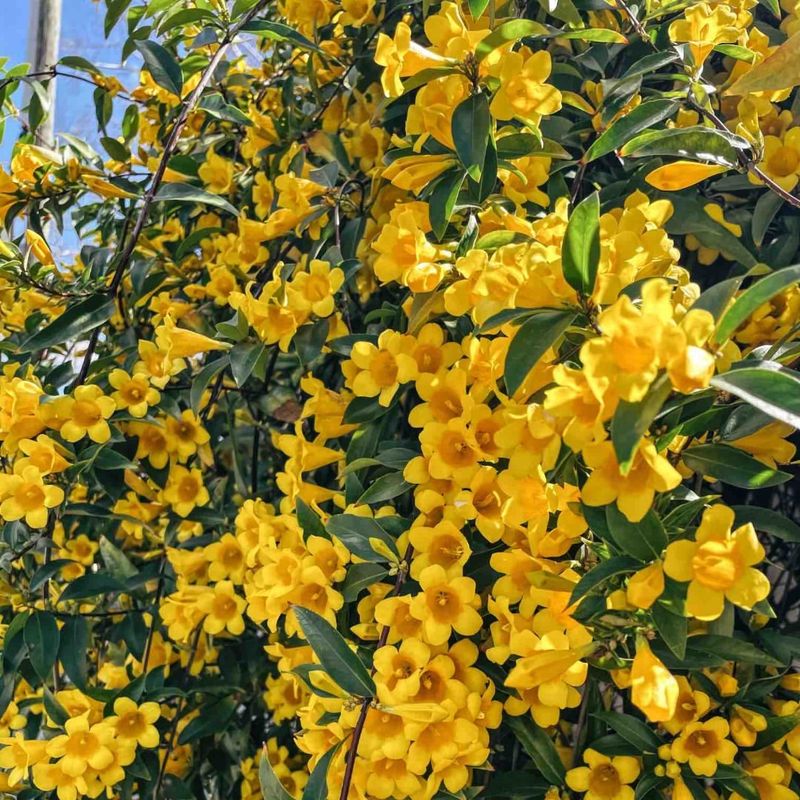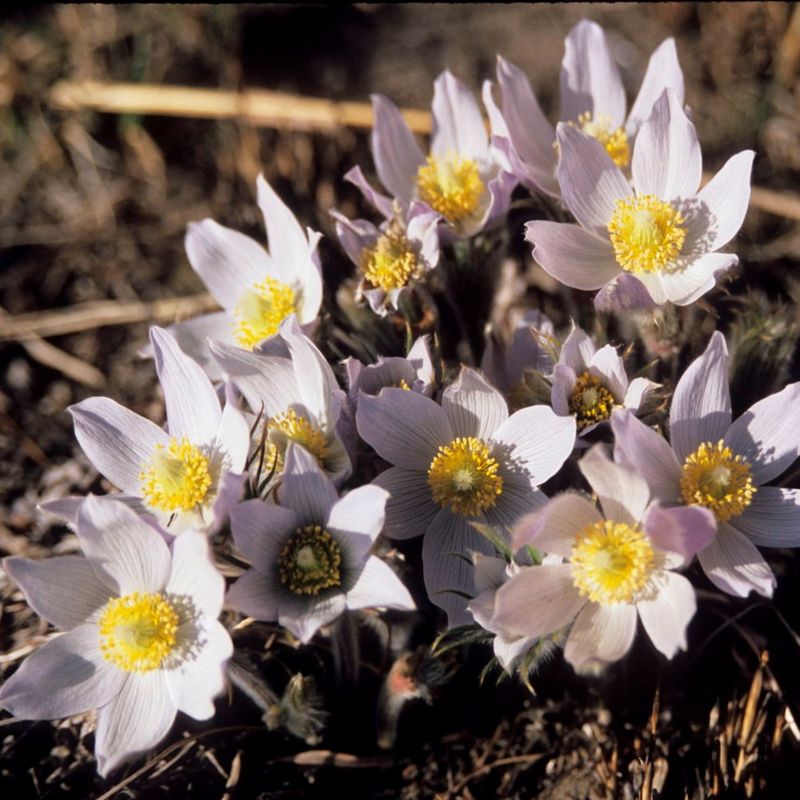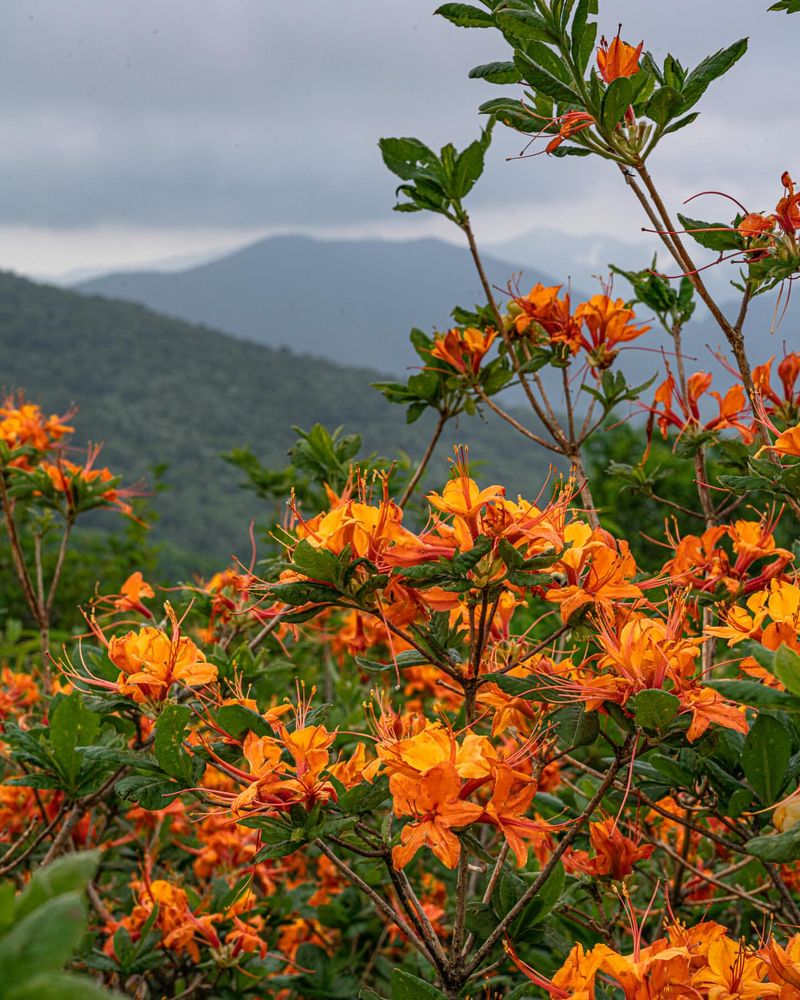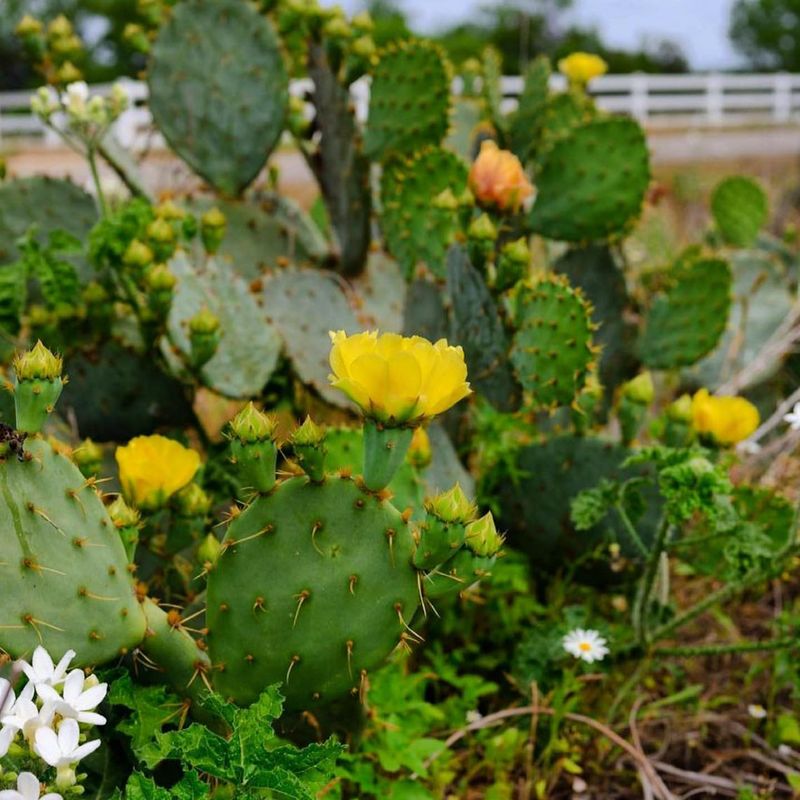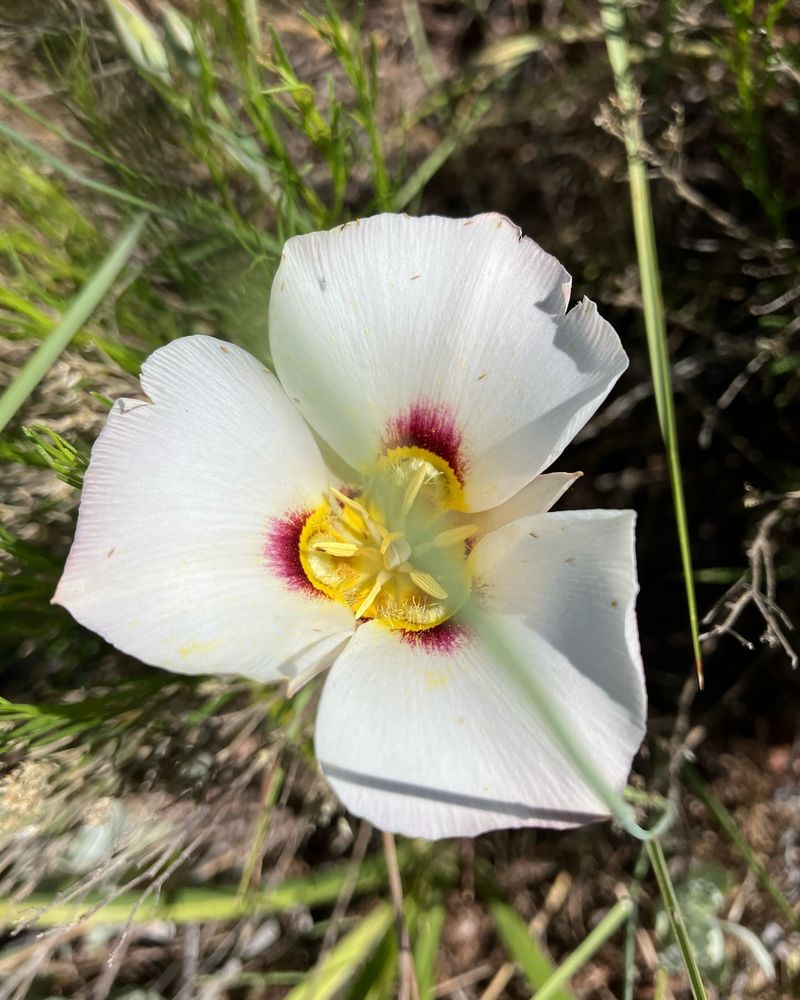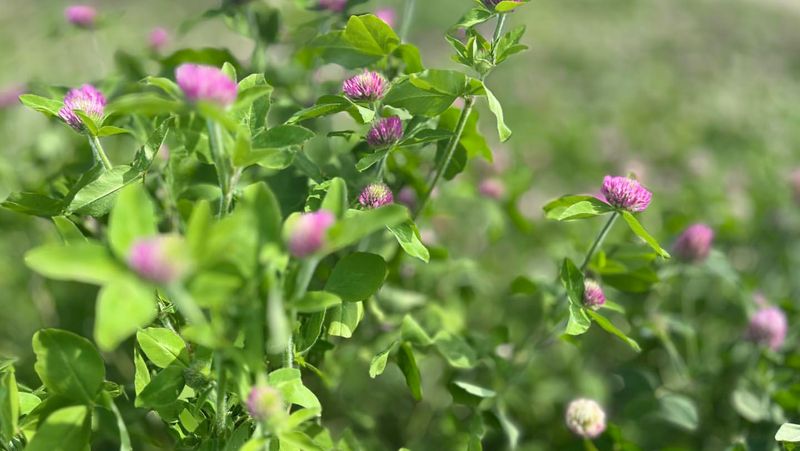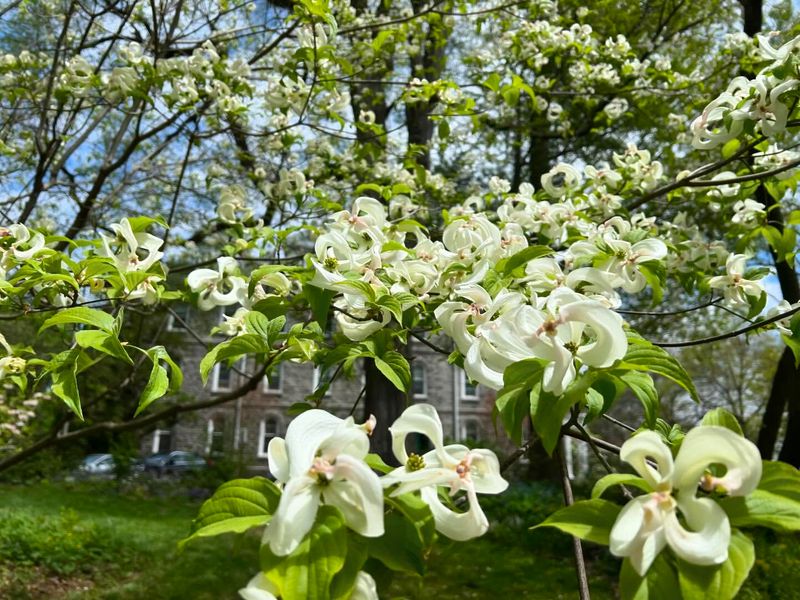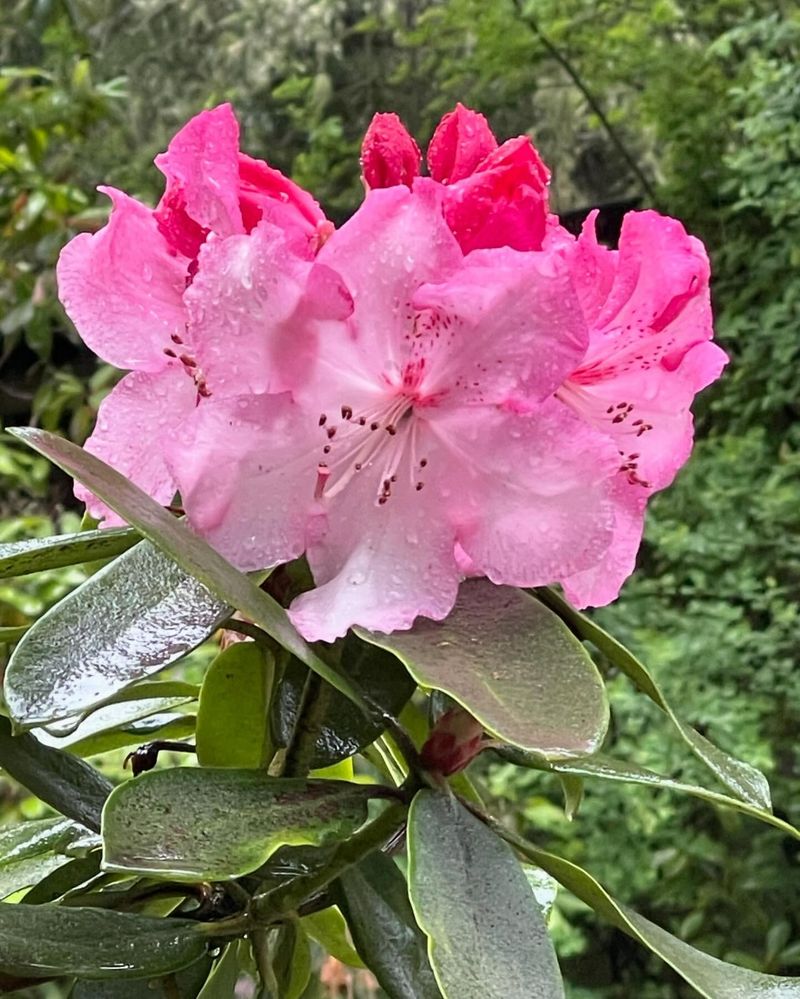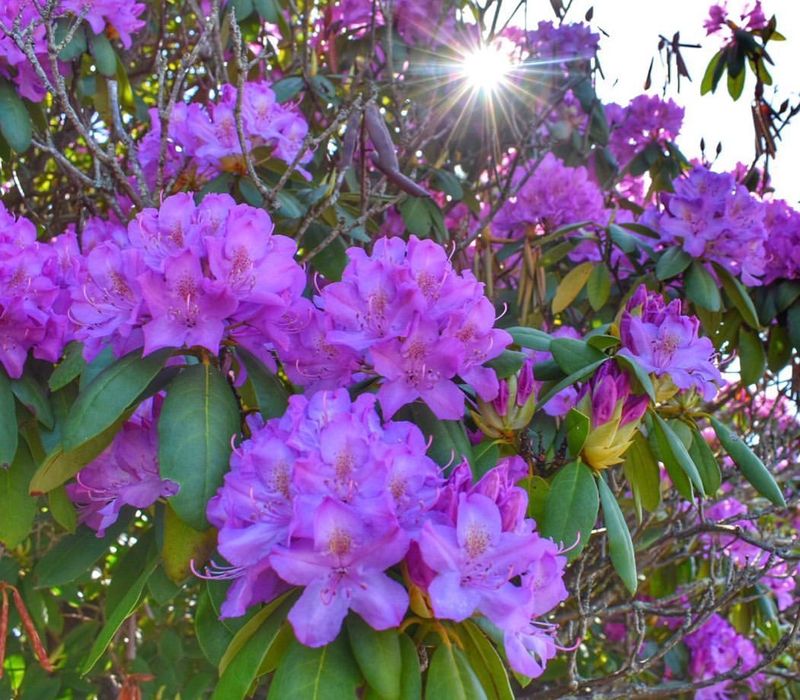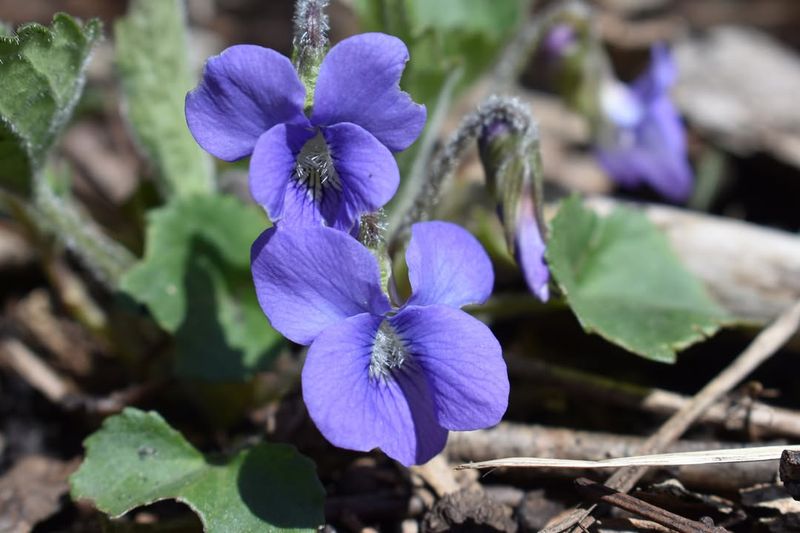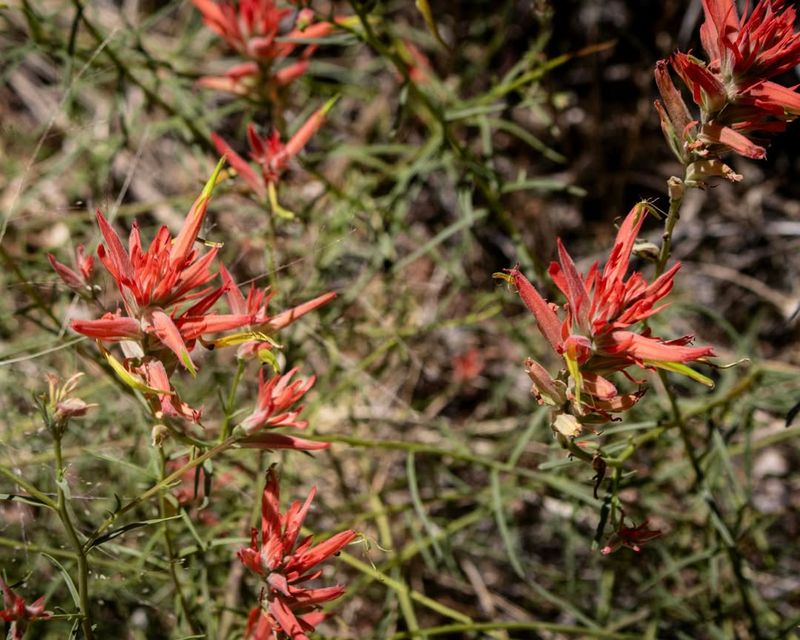Prepare to embark on a vibrant journey across the United States, where each state boasts its own iconic shrub – a symbol of its unique natural beauty and cultural heritage. From the fiery hues of the desert to the lush greenery of the wetlands, these shrubs are more than just plants; they tell the story of the land and its people. So buckle up, and let’s explore the fascinating world of each state’s beloved shrub!
1. Alabama – Oakleaf Hydrangea
Alabama’s oakleaf hydrangea is a spectacle of southern charm. Its massive, cone-shaped clusters of white flowers command attention, celebrating the state’s warm climate. As the flowers transition from white to pink, they mirror Alabama’s rich history. In gardens across the state, these shrubs stand tall as a testament to resilience and beauty.
The oakleaf hydrangea’s broad leaves, reminiscent of oak tree leaves, provide ample shade and a lush green backdrop. This shrub not only beautifies but also offers a sense of home, embodying the spirit of Alabama with its unyielding grace and strength.
2. Alaska – Sitka Alder
In the rugged terrains of Alaska, the Sitka alder reigns supreme. Known for its resilience, this shrub thrives where few others dare. Its vibrant green leaves and dangling catkins withstand the harshest of winters, embodying Alaska’s indomitable spirit.
The Sitka alder is more than just a plant; it’s a symbol of survival and adaptability. In the spring, its leaves provide a burst of color against the icy backdrop, a beacon of hope and renewal. This hardy shrub is a beloved fixture in Alaskan gardens, a living testament to endurance.
3. Arizona – Creosote Bush
The creosote bush, Arizona’s desert jewel, is a marvel of natural engineering. Thriving in arid conditions, its resinous leaves capture precious moisture, a skill honed over centuries. It’s a living testament to survival in one of the harshest climates on Earth.
Famed for its distinctive scent, reminiscent of desert rain, the creosote bush is cherished by Arizonans. Its small yellow flowers brighten the barren landscape, offering a splash of color. This iconic shrub is a symbol of resilience and an integral part of Arizona’s desert ecosystem.
4. Arkansas – Ozark Witch Hazel
In the heart of Arkansas, the Ozark witch hazel blooms with a quiet elegance. Known for its spidery yellow flowers, this shrub adds a touch of magic to the autumn landscape. Its blooms appear on bare branches, a striking contrast against the colorful fall leaves.
Revered for its medicinal properties, the Ozark witch hazel is part of the state’s rich herbal lore. It’s not just a plant; it’s a healer and a symbol of natural wisdom, deeply rooted in the culture and history of Arkansas.
5. California – Toyon
California’s toyon, often called the Christmas berry, is a festive delight. Its bright red berries and glossy green leaves are synonymous with holiday cheer. This shrub thrives in the Californian landscape, from coastal areas to inland mountains.
Beyond its beauty, toyon holds cultural significance. It’s a native plant cherished by indigenous peoples for its medicinal uses. In urban settings, it’s a reminder of California’s wild heart, a bridge between bustling city life and serene nature. Toyon is more than a shrub; it’s a celebration of life and tradition.
6. Colorado – Gambel Oak
Nestled in Colorado’s diverse landscape, the Gambel oak stands as a symbol of strength and community. Its lobed leaves and sturdy branches provide shelter for wildlife, creating a thriving ecosystem. Known as the ‘scrub oak,’ this shrub is a versatile survivor in Colorado’s varied climates.
In the fall, its leaves turn a fiery orange and red, painting the foothills with vibrant colors. For Coloradans, the Gambel oak is more than a plant; it’s a connection to the land and its ever-changing seasons, a symbol of natural harmony.
7. Connecticut – Mountain Laurel
Connecticut’s mountain laurel, the state flower, is a spectacle of natural beauty. With its clusters of pink and white flowers, this shrub creates a floral tapestry across the state’s woodlands. Its blooms are a sign of summer’s arrival, a time of joy and celebration.
The mountain laurel’s evergreen leaves provide year-round beauty, a constant amid the changing seasons. It’s more than just a shrub; it symbolizes Connecticut’s commitment to preserving its natural heritage. This iconic plant is cherished by residents for its beauty and resilience, a true botanical treasure.
8. Delaware – American Holly
Delaware’s American holly is a vibrant winter treasure. Its glossy green leaves and bright red berries bring color to the stark winter landscape, a symbol of life amidst the cold. This shrub is more than just a visual delight; it’s a cultural icon.
Historically, American holly has been used in holiday decorations, embodying festive spirit and tradition. In Delaware, it’s a reminder of the warmth of community and the enduring beauty of nature. This cherished plant is a living testament to the state’s rich cultural and natural heritage.
9. Florida – Saw Palmetto
The saw palmetto, a Florida staple, is as iconic as the state’s sunny beaches. With its fan-shaped leaves and robust trunk, this shrub thrives in Florida’s subtropical climate, from coastal dunes to inland forests.
Beyond its striking appearance, saw palmetto holds great ecological and cultural value. Its berries are a crucial resource for wildlife, while also being used in traditional medicine. For Floridians, this shrub embodies resilience and adaptability, a testament to the state’s rich biodiversity and natural beauty. It’s a true symbol of the Sunshine State.
10. Georgia – Cherokee Rose
Georgia’s state flower, the Cherokee rose, is a symbol of purity and resilience. Its striking white petals and golden center are a testament to beauty and strength. This climbing shrub adorns gardens across the state, a beloved emblem of Georgia’s natural charm.
Beyond its beauty, the Cherokee rose is steeped in legend and lore. It’s said to have brought comfort to the Cherokee people during times of hardship. Today, it stands as a symbol of hope and the enduring spirit of Georgia. This shrub is more than a plant; it’s a legacy.
11. Hawaii – Hibiscus
In Hawaii, the hibiscus reigns supreme, a vibrant symbol of the islands’ natural beauty. Its large, colorful petals capture the essence of aloha, welcoming visitors with a splash of tropical color. This iconic shrub adorns gardens and landscapes across Hawaii, a beloved part of the scenery.
The hibiscus is more than just a pretty face; it holds cultural significance as the state flower. Its blooms are used in leis and traditional Hawaiian ceremonies, embodying the spirit of hospitality and joy. This plant is a living symbol of Hawaii’s vibrant culture and natural splendor.
12. Idaho – Syringa
Idaho’s state flower, the syringa, captivates with its fragrant white blossoms. This shrub, often called the mock orange, is a beloved feature of Idaho’s meadows and gardens, heralding the arrival of summer with its intoxicating scent.
The syringa’s delicate blooms and lush foliage create a stunning visual display, a testament to the state’s natural beauty. For Idahoans, this shrub symbolizes the purity and freshness of nature. It’s more than just a plant; it’s a cherished part of Idaho’s landscape and an emblem of the state’s commitment to preserving its natural heritage.
13. Illinois – Violet
The violet, Illinois’ state flower, is a small but mighty emblem of the state’s rich natural heritage. With its delicate purple blooms and heart-shaped leaves, this shrub adds a touch of elegance to Illinois’ woodlands and gardens.
Despite its modest size, the violet is a symbol of resilience and beauty. It thrives in various environments, showcasing adaptability and strength. For Illinois residents, the violet represents the quiet, persistent beauty of nature, a symbol of hope and renewal. This beloved plant is a testament to the enduring charm of Illinois’ landscapes.
14. Indiana – Peony
Indiana’s state flower, the peony, is a celebration of beauty and grace. Its lush pink blossoms are a spectacle in gardens across the state, heralding the arrival of spring with a burst of color and fragrance.
The peony’s lush foliage provides a verdant backdrop, adding to its visual appeal. This shrub is more than just a decorative plant; it symbolizes prosperity and good fortune. For Hoosiers, the peony is a cherished part of their gardens, a symbol of the warmth and hospitality that defines Indiana’s community spirit.
15. Iowa – Prairie Rose
Iowa’s prairie rose is a symbol of the state’s natural beauty and resilience. With its delicate pink flowers and thorny stems, this shrub thrives in the open prairies, adding a splash of color to the landscape.
The prairie rose’s blooms are a sign of summer’s arrival, a time of growth and renewal. For Iowans, this shrub represents the spirit of the prairie, a testament to strength and adaptability. It’s more than just a plant; it’s a cherished part of Iowa’s natural heritage, a symbol of the state’s commitment to preserving its unique landscapes.
16. Kansas – Sumac
Kansas’ sumac is a vibrant addition to the prairie landscape. Known for its fiery autumn foliage and distinctive red berries, this shrub adds a splash of color to the state’s open fields.
Beyond its beauty, sumac holds ecological value. Its berries provide food for wildlife, while its dense foliage offers shelter. For Kansans, sumac represents the balance between beauty and function, a symbol of the interconnectedness of nature. This shrub is a beloved part of the Kansas landscape, a testament to the state’s rich natural heritage and vibrant ecosystem.
17. Kentucky – Kentucky Coffeetree
Kentucky’s coffeetree is a unique and intriguing part of the state’s natural landscape. Known for its distinctive compound leaves and large seed pods, this shrub stands out in Kentucky’s woodlands.
The Kentucky coffeetree’s towering presence and unusual features make it a topic of fascination and admiration. Historically, its seeds were used as a coffee substitute, adding to its cultural significance. For Kentuckians, this shrub symbolizes resourcefulness and innovation, a testament to the state’s pioneering spirit and rich natural heritage. It’s more than just a plant; it’s a piece of history.
18. Louisiana – Louisiana Iris
In Louisiana’s wetlands, the Louisiana iris blooms with unmatched beauty. Known for its striking blue and purple petals, this shrub is a symbol of the state’s vibrant natural landscape.
The Louisiana iris thrives in watery environments, adding a splash of color to swamps and marshes. For Louisianans, this shrub represents the beauty and resilience of the state’s unique ecosystems. It’s more than just a plant; it’s a cherished part of Louisiana’s natural heritage, a symbol of the state’s commitment to preserving its rich biodiversity.
19. Maine – Winterberry
Maine’s winterberry is a vibrant winter wonder. Known for its bright red berries that contrast starkly against bare branches, this shrub adds a splash of color to the snowy Maine landscape.
The winterberry’s berries are a vital food source for wildlife, providing nourishment during the harsh winter months. For Mainers, this shrub is a symbol of resilience and survival, a testament to the enduring beauty of nature in the face of adversity. It’s more than just a plant; it’s a cherished part of Maine’s natural heritage, a symbol of the state’s rugged charm.
20. Maryland – Bay Laurel
Maryland’s bay laurel is a symbol of the state’s coastal charm. Known for its glossy green leaves and aromatic scent, this shrub thrives in Maryland’s temperate climate.
Beyond its beauty, the bay laurel holds culinary significance. Its leaves are used to flavor dishes, adding a touch of the state’s natural heritage to the kitchen. For Marylanders, this shrub represents the blend of beauty and practicality, a testament to the state’s rich cultural and natural heritage. It’s more than just a plant; it’s a cherished part of Maryland’s landscape.
21. Massachusetts – Mayflower
Massachusetts’ mayflower, the state flower, is a delicate emblem of hope and renewal. Known for its fragrant white or pink blossoms, this shrub adds a touch of elegance to the state’s woodlands.
The mayflower blooms in early spring, a sign of the season’s arrival and a symbol of new beginnings. For Massachusetts residents, this shrub is a cherished part of their natural heritage, a testament to the state’s commitment to preserving its unique landscapes. It’s more than just a plant; it’s a symbol of resilience and the enduring beauty of nature.
22. Michigan – Lilac
Michigan’s lilac is a fragrant delight, heralding the arrival of spring with its lush purple blooms. This shrub is a beloved feature of gardens across the state, adding a touch of elegance and charm.
The lilac’s fragrance is intoxicating, a symbol of renewal and new beginnings. For Michiganders, this shrub represents the enduring beauty of nature and the state’s commitment to preserving its natural heritage. It’s more than just a plant; it’s a cherished part of Michigan’s landscape, a testament to the state’s rich cultural and natural heritage.
23. Minnesota – Common Juniper
Minnesota’s common juniper is a hardy survivor, thriving in the state’s diverse landscapes. Known for its blue berries and needle-like leaves, this shrub adds a touch of rugged beauty to Minnesota’s forests.
Beyond its striking appearance, the common juniper holds ecological significance. Its berries are a vital food source for wildlife, while its dense foliage provides shelter. For Minnesotans, this shrub represents resilience and adaptability, a testament to the state’s natural beauty and diverse ecosystems. It’s more than just a plant; it’s a cherished part of Minnesota’s landscape.
24. Mississippi – Southern Magnolia
Mississippi’s southern magnolia is a symbol of elegance and southern charm. Known for its large white flowers and glossy green leaves, this shrub is a beloved feature of gardens across the state.
The southern magnolia’s blooms are a testament to the beauty and grace of the southern landscape. For Mississippians, this shrub represents the warmth and hospitality of the state’s culture, a testament to the enduring beauty of nature. It’s more than just a plant; it’s a cherished part of Mississippi’s natural heritage, a symbol of the state’s rich cultural and natural history.
25. Missouri – Hawthorn
Missouri’s hawthorn is a symbol of the state’s natural beauty and resilience. Known for its white flowers and red berries, this shrub thrives in Missouri’s diverse landscapes, from meadows to woodlands.
The hawthorn’s blooms are a sign of spring’s arrival, a time of growth and renewal. For Missourians, this shrub represents the spirit of the state, a testament to strength and adaptability. It’s more than just a plant; it’s a cherished part of Missouri’s natural heritage, a symbol of the state’s commitment to preserving its unique landscapes.
26. Montana – Serviceberry
Montana’s serviceberry is a symbol of the state’s rugged beauty. Known for its white flowers and small purple berries, this shrub adds a touch of elegance to Montana’s mountainous landscapes.
The serviceberry’s blooms are a sign of spring’s arrival, a time of growth and renewal. For Montanans, this shrub represents the spirit of the state, a testament to strength and adaptability. It’s more than just a plant; it’s a cherished part of Montana’s natural heritage, a symbol of the state’s commitment to preserving its unique landscapes.
27. Nebraska – Goldenrod
Nebraska’s goldenrod is a vibrant symbol of the state’s natural beauty. Known for its bright yellow flowers, this shrub adds a splash of color to Nebraska’s prairies, a testament to the state’s rich natural heritage.
The goldenrod’s blooms are a sign of summer’s arrival, a time of growth and renewal. For Nebraskans, this shrub represents the spirit of the prairie, a testament to strength and adaptability. It’s more than just a plant; it’s a cherished part of Nebraska’s landscape, a symbol of the state’s commitment to preserving its unique ecosystems.
28. Nevada – Sagebrush
Nevada’s sagebrush is a symbol of the state’s rugged beauty. Known for its silvery leaves and yellow flowers, this shrub thrives in Nevada’s desert landscapes, a testament to the state’s resilience and adaptability.
The sagebrush’s blooms are a sign of spring’s arrival, a time of growth and renewal. For Nevadans, this shrub represents the spirit of the state, a testament to strength and adaptability. It’s more than just a plant; it’s a cherished part of Nevada’s natural heritage, a symbol of the state’s commitment to preserving its unique landscapes.
29. New Hampshire – Purple Lilac
New Hampshire’s purple lilac is a fragrant delight, heralding the arrival of spring with its lush purple blooms. This shrub is a beloved feature of gardens across the state, adding a touch of elegance and charm.
The lilac’s fragrance is intoxicating, a symbol of renewal and new beginnings. For New Hampshirites, this shrub represents the enduring beauty of nature and the state’s commitment to preserving its natural heritage. It’s more than just a plant; it’s a cherished part of New Hampshire’s landscape, a testament to the state’s rich cultural and natural heritage.
30. New Jersey – Northern Red Oak
New Jersey’s northern red oak is a symbol of the state’s natural beauty and resilience. Known for its lobed leaves and acorns, this shrub thrives in New Jersey’s diverse landscapes, from forests to gardens.
The northern red oak’s leaves turn a fiery red in the fall, adding a splash of color to the landscape. For New Jerseyans, this shrub represents the spirit of the state, a testament to strength and adaptability. It’s more than just a plant; it’s a cherished part of New Jersey’s natural heritage, a symbol of the state’s commitment to preserving its unique landscapes.
31. New Mexico – Chamisa
In the arid landscapes of New Mexico, the chamisa shrub brings an explosion of color and life. Its bright yellow flowers, nestled among silvery-green leaves, create a golden carpet that defies the desert’s harshness.
This shrub is not just a pretty face; it’s a survivor, adapted to thrive in the arid climate. For New Mexicans, chamisa symbolizes resilience, standing tall against the odds. It’s a beloved part of the state’s natural heritage, embodying the spirit of the Southwest. Chamisa is more than a shrub; it’s a testament to the beauty hidden in harshness.
32. New York – Lilac
New York’s lilac is a fragrant delight, heralding the arrival of spring with its lush purple blooms. This shrub is a beloved feature of gardens across the state, adding a touch of elegance and charm.
The lilac’s fragrance is intoxicating, a symbol of renewal and new beginnings. For New Yorkers, this shrub represents the enduring beauty of nature and the state’s commitment to preserving its natural heritage. It’s more than just a plant; it’s a cherished part of New York’s landscape, a testament to the state’s rich cultural and natural heritage.
33. North Carolina – Dogwood
North Carolina’s dogwood is a symbol of the state’s natural beauty and resilience. Known for its delicate white or pink flowers, this shrub adds a touch of elegance to North Carolina’s woodlands and gardens.
The dogwood’s blooms are a sign of spring’s arrival, a time of growth and renewal. For North Carolinians, this shrub represents the spirit of the state, a testament to strength and adaptability. It’s more than just a plant; it’s a cherished part of North Carolina’s natural heritage, a symbol of the state’s commitment to preserving its unique landscapes.
34. North Dakota – Wild Prairie Rose
North Dakota’s wild prairie rose is a symbol of the state’s natural beauty and resilience. With its delicate pink flowers and thorny stems, this shrub thrives in the open prairies, adding a splash of color to the landscape.
The wild prairie rose’s blooms are a sign of summer’s arrival, a time of growth and renewal. For North Dakotans, this shrub represents the spirit of the prairie, a testament to strength and adaptability. It’s more than just a plant; it’s a cherished part of North Dakota’s natural heritage, a symbol of the state’s commitment to preserving its unique landscapes.
35. Ohio – Scarlet Carnation
Ohio’s scarlet carnation is a vibrant symbol of the state’s natural beauty. Known for its vibrant red petals, this shrub adds a splash of color to Ohio’s gardens and landscapes.
The scarlet carnation’s blooms are a sign of summer’s arrival, a time of growth and renewal. For Ohioans, this shrub represents the spirit of the state, a testament to strength and adaptability. It’s more than just a plant; it’s a cherished part of Ohio’s natural heritage, a symbol of the state’s commitment to preserving its unique landscapes.
36. Oklahoma – Redbud
Oklahoma’s redbud is a vibrant symbol of the state’s natural beauty. Known for its vibrant pink flowers and heart-shaped leaves, this shrub adds a splash of color to Oklahoma’s gardens and landscapes.
The redbud’s blooms are a sign of spring’s arrival, a time of growth and renewal. For Oklahomans, this shrub represents the spirit of the state, a testament to strength and adaptability. It’s more than just a plant; it’s a cherished part of Oklahoma’s natural heritage, a symbol of the state’s commitment to preserving its unique landscapes.
37. Oregon – Oregon Grape
Oregon’s state flower, the Oregon grape, is a vibrant symbol of the state’s natural beauty. Known for its spiky leaves and bright yellow flowers, this shrub adds a splash of color to Oregon’s forests and gardens.
The Oregon grape’s blooms are a sign of spring’s arrival, a time of growth and renewal. For Oregonians, this shrub represents the spirit of the state, a testament to strength and adaptability. It’s more than just a plant; it’s a cherished part of Oregon’s natural heritage, a symbol of the state’s commitment to preserving its unique landscapes.
38. Pennsylvania – Mountain Laurel
Pennsylvania’s mountain laurel, the state flower, is a spectacle of natural beauty. With its clusters of pink and white flowers, this shrub creates a floral tapestry across the state’s woodlands. Its blooms are a sign of summer’s arrival, a time of joy and celebration.
The mountain laurel’s evergreen leaves provide year-round beauty, a constant amid the changing seasons. It’s more than just a shrub; it symbolizes Pennsylvania’s commitment to preserving its natural heritage. This iconic plant is cherished by residents for its beauty and resilience, a true botanical treasure.
39. Rhode Island – Rhododendron
Rhode Island’s rhododendron is a vibrant symbol of the state’s natural beauty. Known for its vibrant pink or purple flowers, this shrub adds a splash of color to Rhode Island’s gardens and landscapes.
The rhododendron’s blooms are a sign of spring’s arrival, a time of growth and renewal. For Rhode Islanders, this shrub represents the spirit of the state, a testament to strength and adaptability. It’s more than just a plant; it’s a cherished part of Rhode Island’s natural heritage, a symbol of the state’s commitment to preserving its unique landscapes.
40. South Carolina – Yellow Jessamine
South Carolina’s yellow jessamine is a vibrant symbol of the state’s natural beauty. Known for its vibrant yellow flowers and glossy green leaves, this shrub adds a splash of color to South Carolina’s gardens and landscapes.
The yellow jessamine’s blooms are a sign of spring’s arrival, a time of growth and renewal. For South Carolinians, this shrub represents the spirit of the state, a testament to strength and adaptability. It’s more than just a plant; it’s a cherished part of South Carolina’s natural heritage, a symbol of the state’s commitment to preserving its unique landscapes.
41. South Dakota – Pasque Flower
South Dakota’s pasque flower is a symbol of the state’s natural beauty and resilience. Known for its delicate purple petals and yellow center, this shrub adds a splash of color to South Dakota’s prairies and landscapes.
The pasque flower’s blooms are a sign of spring’s arrival, a time of growth and renewal. For South Dakotans, this shrub represents the spirit of the state, a testament to strength and adaptability. It’s more than just a plant; it’s a cherished part of South Dakota’s natural heritage, a symbol of the state’s commitment to preserving its unique landscapes.
42. Tennessee – Flame Azalea
Tennessee’s flame azalea is a vibrant symbol of the state’s natural beauty. Known for its vibrant orange flowers and glossy green leaves, this shrub adds a splash of color to Tennessee’s woodlands and landscapes.
The flame azalea’s blooms are a sign of spring’s arrival, a time of growth and renewal. For Tennesseans, this shrub represents the spirit of the state, a testament to strength and adaptability. It’s more than just a plant; it’s a cherished part of Tennessee’s natural heritage, a symbol of the state’s commitment to preserving its unique landscapes.
43. Texas – Prickly Pear Cactus
Texas’ prickly pear cactus is a vibrant symbol of the state’s natural beauty. Known for its distinctive paddle-shaped pads and vibrant yellow flowers, this shrub adds a splash of color to Texas’ deserts and landscapes.
The prickly pear cactus’s blooms are a sign of spring’s arrival, a time of growth and renewal. For Texans, this shrub represents the spirit of the state, a testament to strength and adaptability. It’s more than just a plant; it’s a cherished part of Texas’ natural heritage, a symbol of the state’s commitment to preserving its unique landscapes.
44. Utah – Sego Lily
Utah’s sego lily is a symbol of the state’s natural beauty and resilience. Known for its delicate white petals and yellow center, this shrub adds a splash of color to Utah’s deserts and landscapes.
The sego lily’s blooms are a sign of spring’s arrival, a time of growth and renewal. For Utahns, this shrub represents the spirit of the state, a testament to strength and adaptability. It’s more than just a plant; it’s a cherished part of Utah’s natural heritage, a symbol of the state’s commitment to preserving its unique landscapes.
45. Vermont – Red Clover
Vermont’s red clover is a vibrant symbol of the state’s natural beauty. Known for its distinctive pink or red flowers, this shrub adds a splash of color to Vermont’s meadows and landscapes.
The red clover’s blooms are a sign of summer’s arrival, a time of growth and renewal. For Vermonters, this shrub represents the spirit of the state, a testament to strength and adaptability. It’s more than just a plant; it’s a cherished part of Vermont’s natural heritage, a symbol of the state’s commitment to preserving its unique landscapes.
46. Virginia – Flowering Dogwood
Virginia’s flowering dogwood is a symbol of the state’s natural beauty and resilience. Known for its delicate white or pink flowers, this shrub adds a touch of elegance to Virginia’s woodlands and gardens.
The flowering dogwood’s blooms are a sign of spring’s arrival, a time of growth and renewal. For Virginians, this shrub represents the spirit of the state, a testament to strength and adaptability. It’s more than just a plant; it’s a cherished part of Virginia’s natural heritage, a symbol of the state’s commitment to preserving its unique landscapes.
47. Washington – Rhododendron
Washington’s rhododendron is a vibrant symbol of the state’s natural beauty. Known for its vibrant pink or purple flowers, this shrub adds a splash of color to Washington’s gardens and landscapes.
The rhododendron’s blooms are a sign of spring’s arrival, a time of growth and renewal. For Washingtonians, this shrub represents the spirit of the state, a testament to strength and adaptability. It’s more than just a plant; it’s a cherished part of Washington’s natural heritage, a symbol of the state’s commitment to preserving its unique landscapes.
48. West Virginia – Rhododendron
West Virginia’s rhododendron is a vibrant symbol of the state’s natural beauty. Known for its vibrant pink or purple flowers, this shrub adds a splash of color to West Virginia’s gardens and landscapes.
The rhododendron’s blooms are a sign of spring’s arrival, a time of growth and renewal. For West Virginians, this shrub represents the spirit of the state, a testament to strength and adaptability. It’s more than just a plant; it’s a cherished part of West Virginia’s natural heritage, a symbol of the state’s commitment to preserving its unique landscapes.
49. Wisconsin – Wood Violet
Wisconsin’s wood violet is a delicate symbol of the state’s natural beauty. Known for its delicate purple flowers and heart-shaped leaves, this shrub adds a touch of elegance to Wisconsin’s woodlands and gardens.
The wood violet’s blooms are a sign of spring’s arrival, a time of growth and renewal. For Wisconsinites, this shrub represents the spirit of the state, a testament to strength and adaptability. It’s more than just a plant; it’s a cherished part of Wisconsin’s natural heritage, a symbol of the state’s commitment to preserving its unique landscapes.
50. Wyoming – Indian Paintbrush
Wyoming’s Indian paintbrush is a vibrant symbol of the state’s rugged beauty. Known for its vibrant red or orange flowers, this shrub adds a splash of color to Wyoming’s prairies and landscapes.
The Indian paintbrush’s blooms are a sign of spring’s arrival, a time of growth and renewal. For Wyomingites, this shrub represents the spirit of the state, a testament to strength and adaptability. It’s more than just a plant; it’s a cherished part of Wyoming’s natural heritage, a symbol of the state’s commitment to preserving its unique landscapes.


